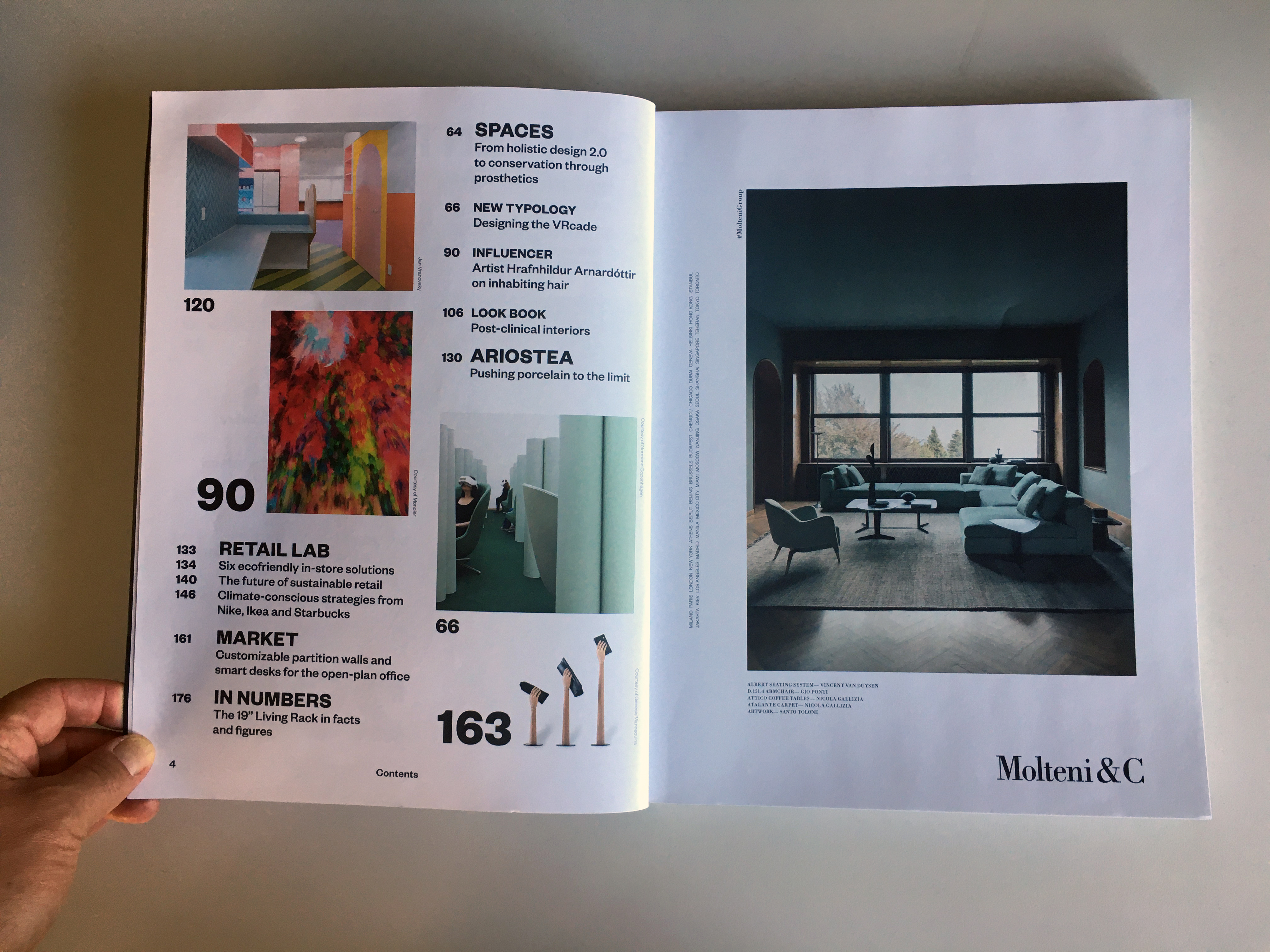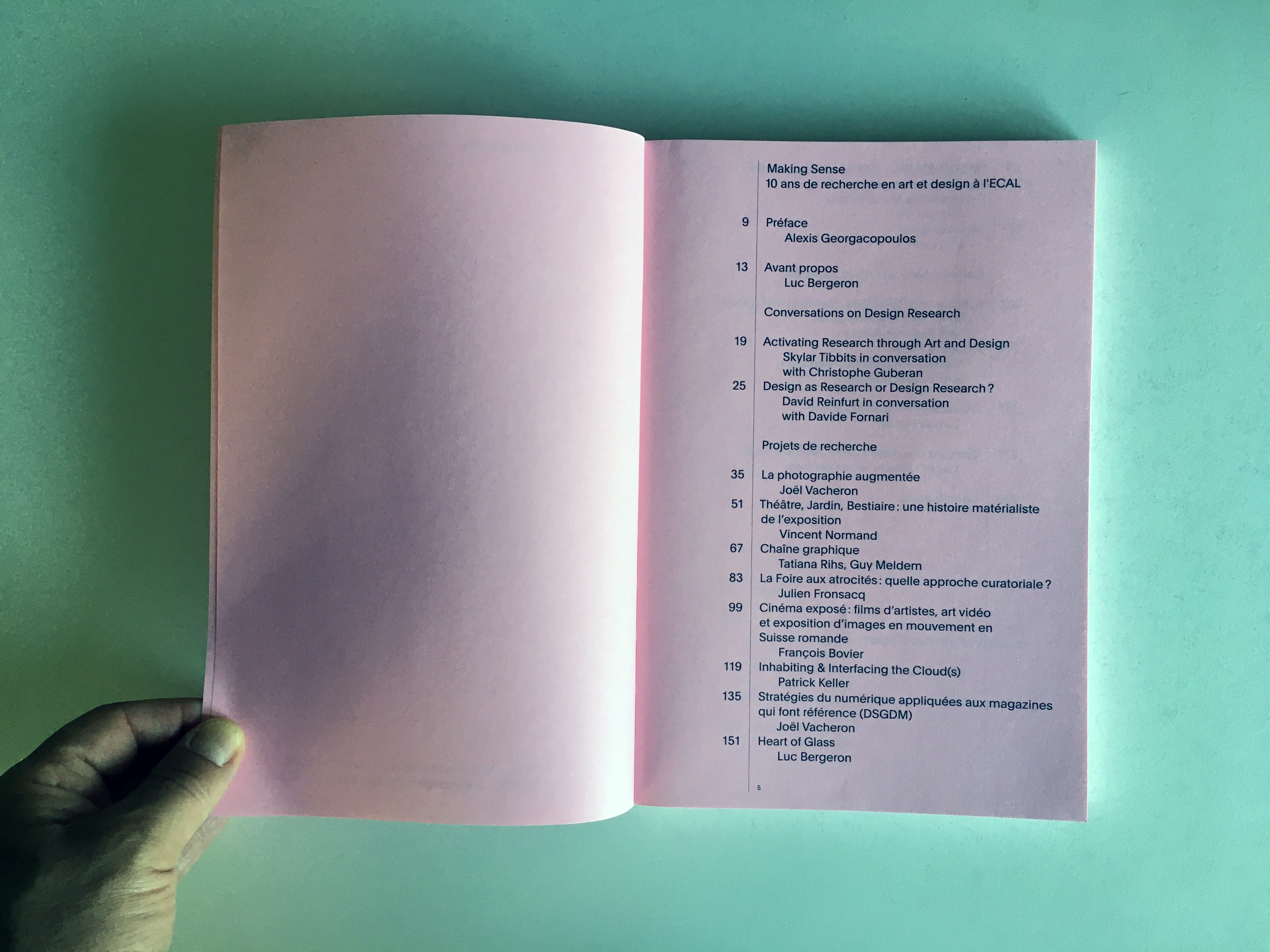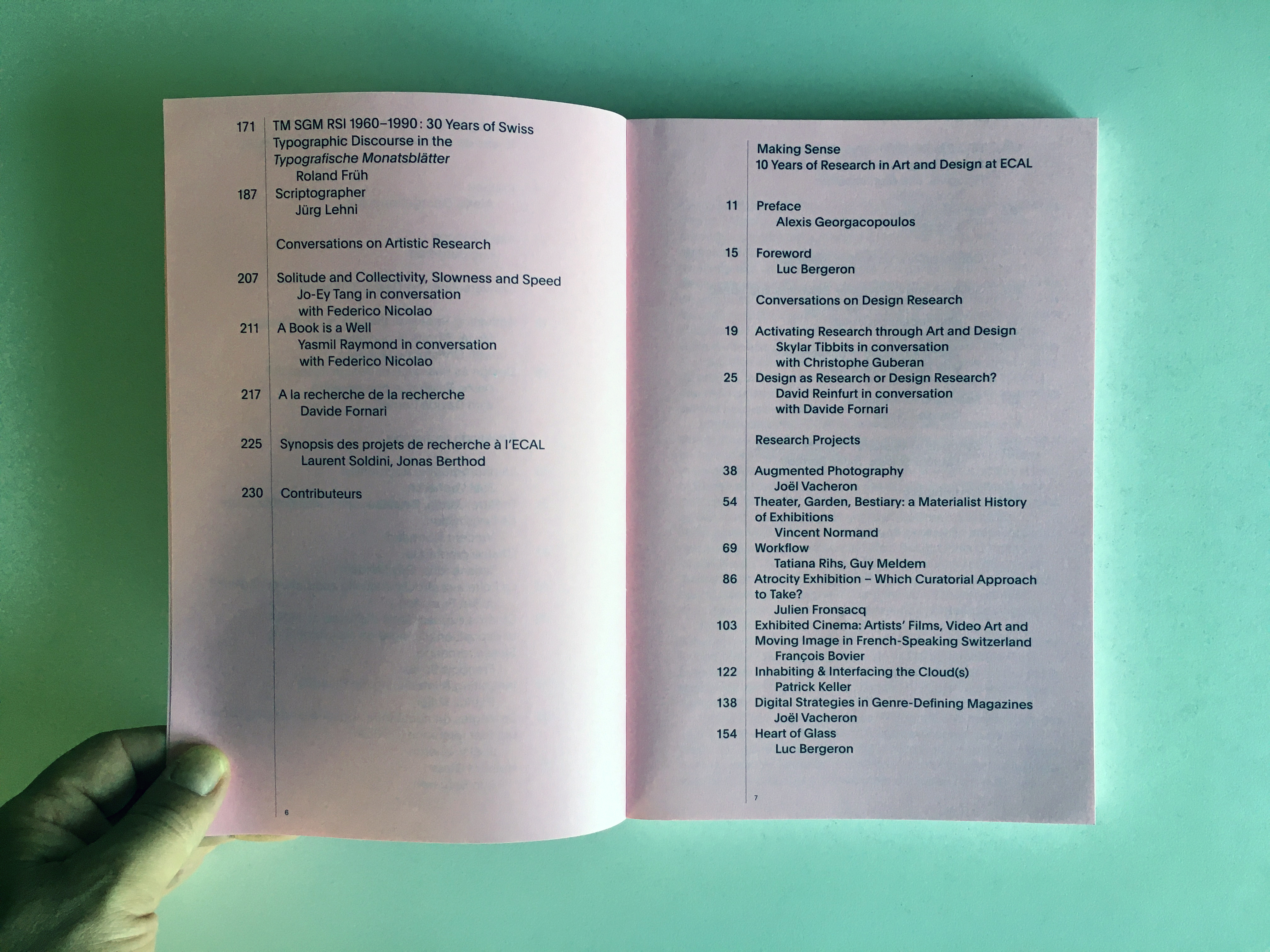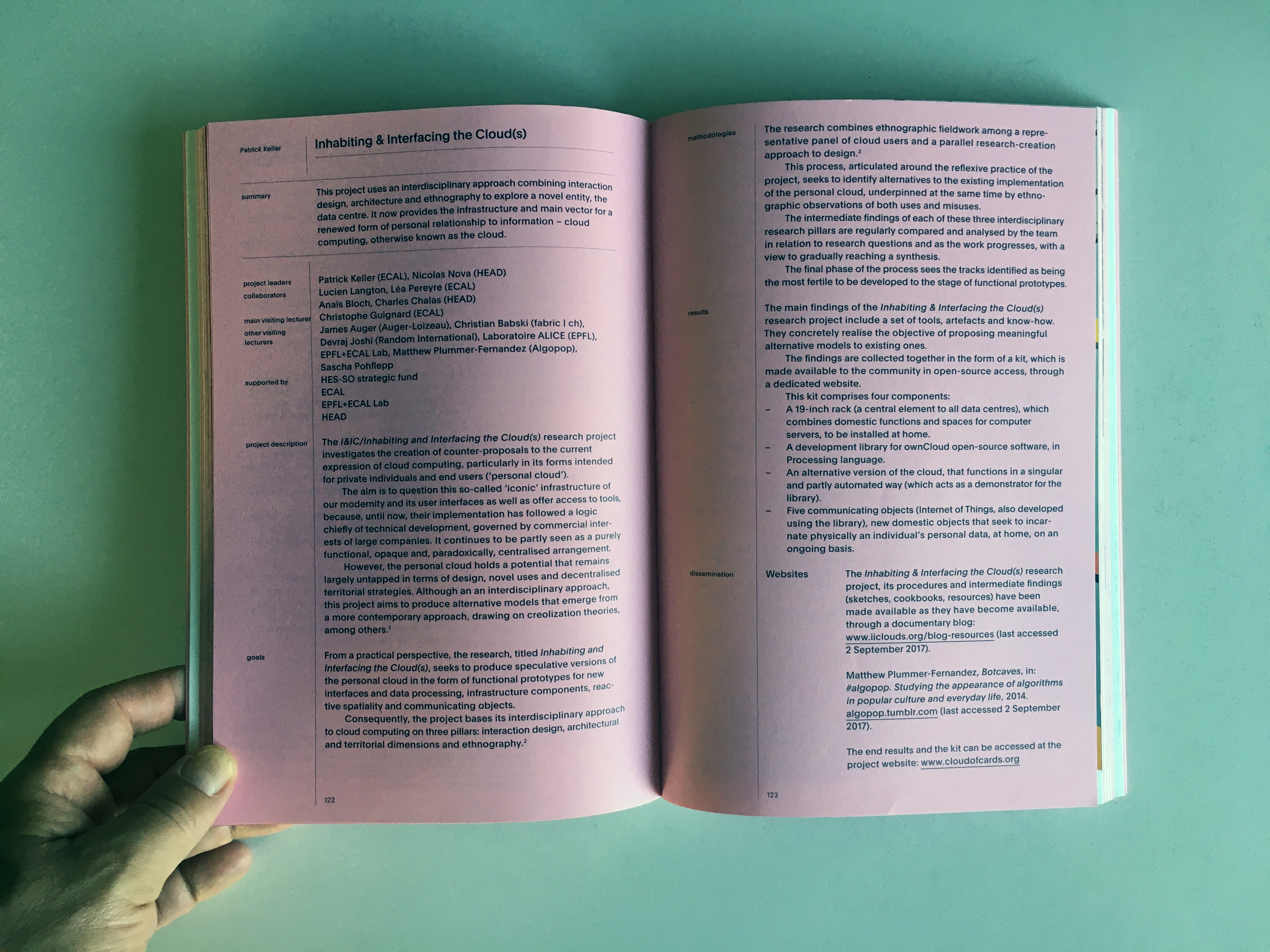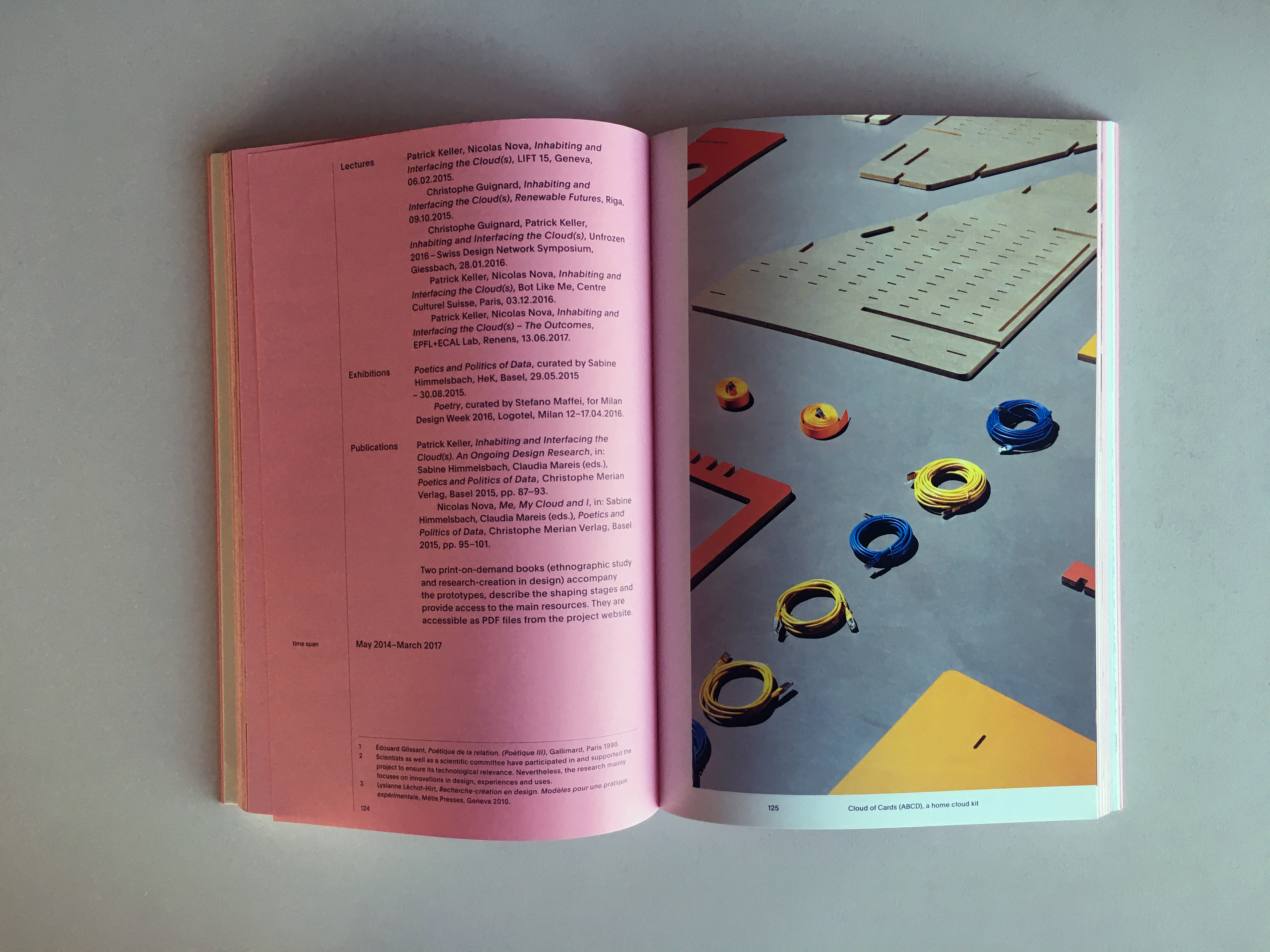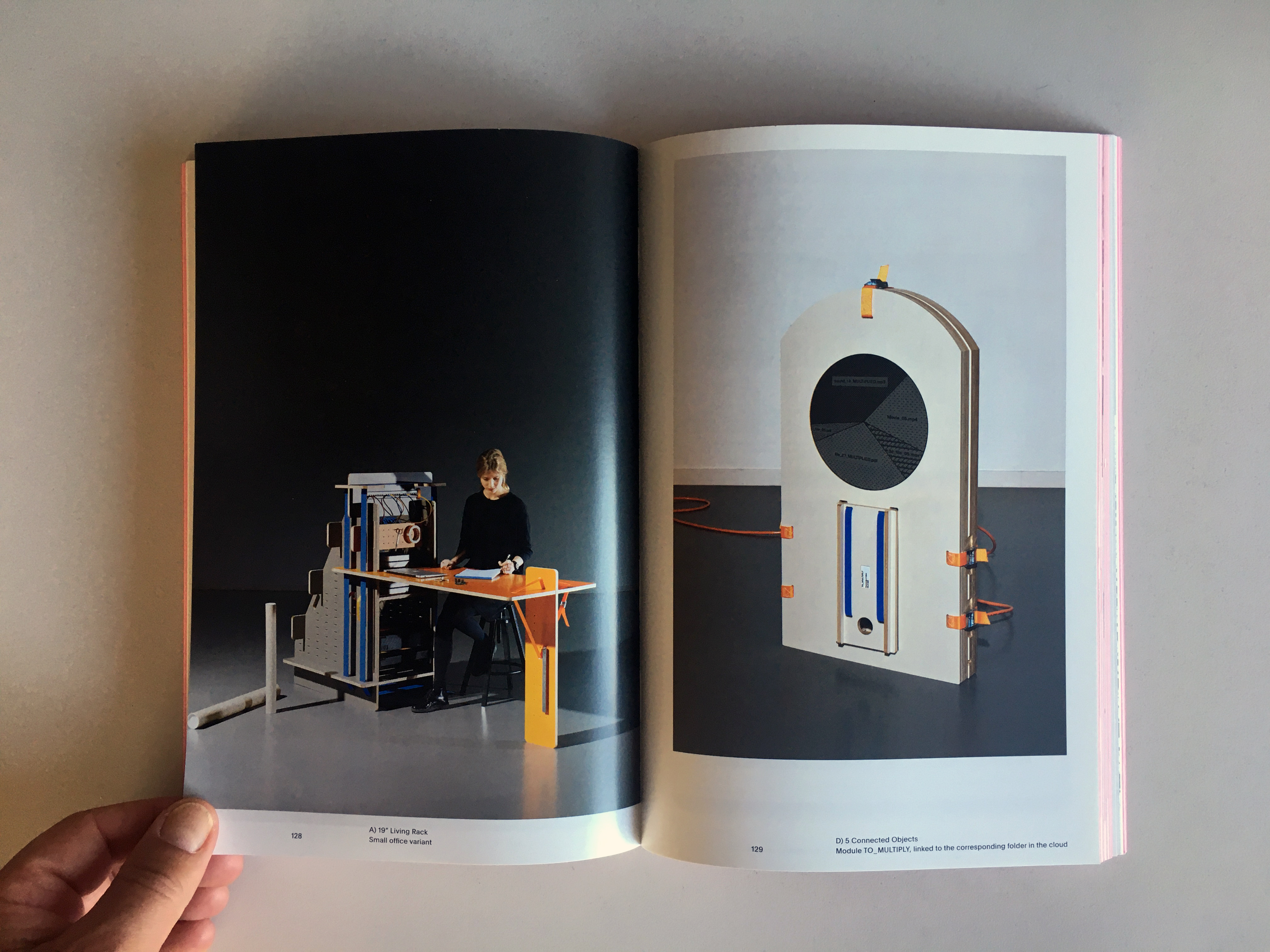Wednesday, January 26. 2022
Platform of Future-Past (2022) at HOW Art Museum in Shanghai | #data #monitering #installation
Note:
The exhibition Beneath the Skin, Between the Machines just opened at HOW Art Museum (Hao Art Gallery) and fabric | ch was keen to be invited to create a large installation for the show, also intented to be used during a symposium that will be entirely part of the exhibition (panels and talks as part of the installation therefore). The exhibition will be open between January 15 - April 24 2022 in Shanghai.
Along with a selection of chinese and international artists, curator Liaoliao Fu asked us to develop a proposal based on a former architectural device, Public Platform of Future-Past, which in itself was inspired by an older installation of ours... Heterochrony.
This new work, entitled Platform of Future-Past, deals with the temporal oddity that can be produced and induced by the recording, accumulation and storage of monitoring data, which contributes to leaving partial traces of "reality", functioning as spectres of the past.
We are proud to present this work along artists such as Hito Steyerl, Geumhyung Jeong, Lu Yang, Jon Rafman, Forensic Architecture, Lynn Hershman Leeson and Harun Farocki.
...
Last but not least and somehow a "sign of the times", this is the first exhibition in which we are participating and whose main financial backers are a blockchain and crypto-finance company, as well as a NFT platform. Both based in China.
More information about the symposium will be published.
Via Pro Helvetia
-----

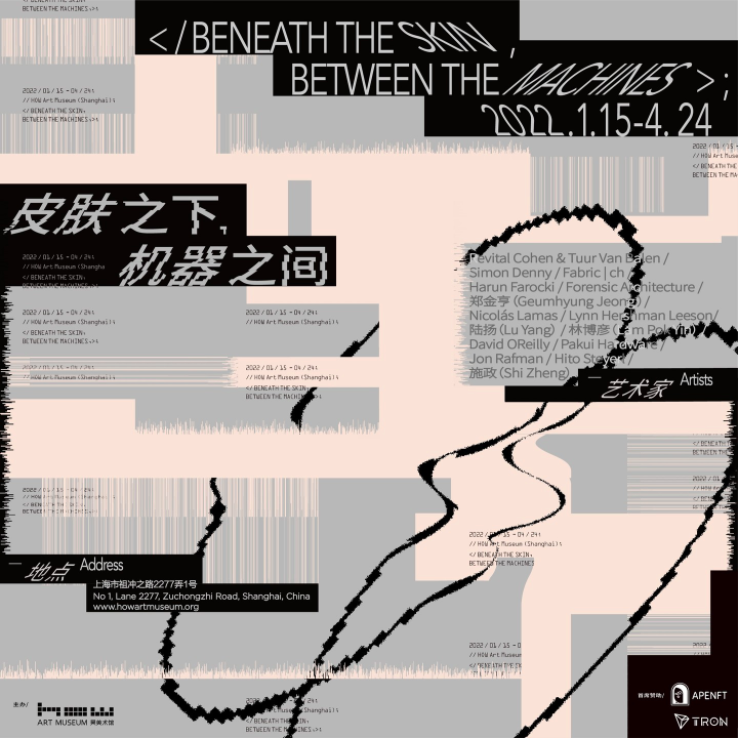
-----
Curatorial Statement
By Fu Liaoliao and the curatorial team
"Man is only man at the surface. Remove the skin, dissect, and immediately you come to machinery.” When Paul Valéry wrote this down, he might not foresee that human beings – a biological organism – would indeed be incorporated into machinery at such a profound level in a highly informationized and computerized time and space. In a sense, it is just as what Marx predicted: a conscious connection of machine[1]. Today, machine is no longer confined to any material form; instead, it presents itself in the forms of data, coding and algorithm – virtually everything that is “operable”, “calculable” and “thinkable”. Ever since the idea of cyborg emerges, the man-machine relation has always been intertwined with our imagination, vision and fear of the past, present and future.
In a sense, machine represents a projection of human beings. We human beings transfer ideas of slavery and freedom to other beings, namely a machine that could replace human beings as technical entities or tools. Opposite (and similar, in a sense,) to the “embodiment” of machine, organic beings such as human beings are hurrying to move towards “disembodiment”. Everything pertinent to our body and behavior can be captured and calculated as data. In the meantime, the social system that human beings have created never stops absorbing new technologies. During the process of trial and error, the difference and fortuity accompanying the “new” are taken in and internalized by the system. “Every accident, every impulse, every error is productive (of the social system),”[2] and hence is predictable and calculable. Within such a system, differences tend to be obfuscated and erased, but meanwhile due to highly professional complexities embedded in different disciplines/fields, genuine interdisciplinary communication is becoming increasingly difficult, if not impossible.
As a result, technologies today are highly centralized, homogenized, sophisticated and commonized. They penetrate deeply into our skin, but beyond knowing, sensing and thinking. On the one hand, the exhibition probes into the reconfiguration of man by technologies through what’s “beneath the skin”; and on the other, encourages people to rethink the position and situation we’re in under this context through what’s “between the machines”. As an art institute located at Shanghai Zhangjiang Hi-Tech Industrial Development Zone, one of the most important hi-tech parks in China, HOW Art Museum intends to carve out an open rather than enclosed field through the exhibition, inviting the public to immerse themselves and ponder upon the questions such as “How people touch machines?”, “What the machines think of us?” and “Where to position art and its practice in the face of the overwhelming presence of technology and the intricate technological reality?”
Departing from these issues, the exhibition presents a selection of recent works of Revital Cohen & Tuur Van Balen, Simon Denny, Harun Farocki, Nicolás Lamas, Lynn Hershman Leeson, Lu Yang, Lam Pok Yin, David OReilly, Pakui Hardware, Jon Rafman, Hito Steyerl, Shi Zheng and Geumhyung Jeong. In the meantime, it intends to set up a “panel installation”, specially created by fabric | ch for this exhibition, trying to offer a space and occasion for decentralized observation and participation in the above discussions. Conversations and actions are to be activated as well as captured, observed and archived at the same time.
[1] Karl Marx, “Fragment on Machines”, Foundations of a Critique of Political Economy
[2] Niklas Luhmann, Social Systems
-----
Schedule
Duration: January 15-April 24, 2022
Artists: Revital Cohen & Tuur Van Balen, Simon Denny, fabric | ch, Harun Farocki, Geumhyung Jeong, Nicolás Lamas, Lynn Hershman Leeson, Lu Yang, Lam Pok Yin, David OReilly, Pakui Hardware, Jon Rafman, Hito Steyerl, Shi Zheng
Curator: Fu Liaoliao
Organizer: HOW Art Museum, Shanghai
Lead Sponsor: APENFT Foundation
Swiss participation is supported by Pro Helvetia Shanghai, Swiss Arts Council.
(Swiss speakers and performers appearing in the educational events will be updated soon.)
-----
Work by fabric | ch
HOW Art Museum has invited Lausanne-based artist group fabric | ch to set up a “panel installation” based on their former project “Public Platform of Future Past” and adapted to the museum space, fostering insightful communication among practitioners from different fields and the audiences.
“Platform of Future-Past” is a temporary environmental device that consists in a twenty meters long walkway, or rather an observation deck, almost archaeological: a platform that overlooks an exhibition space and that, paradoxically, directly links its entrance to its exit. It thus offers the possibility of crossing this space without really entering it and of becoming its observer, as from archaeological observation decks. The platform opens- up contrasting atmospheres and offers affordances or potential uses on the ground.
The peculiarity of the work consists thus in the fact that it generates a dual perception and a potential temporal disruption, which leads to the title of the work, Platform of Future-Past: if the present time of the exhibition space and its visitors is, in fact, the “archeology” to be observed from the platform, and hence a potential “past,” then the present time of the walkway could be understood as a possible “future” viewed from the ground…
“Platform of Future-Past” is equipped in three zones with environmental monitoring devices. The sensors record as much data as possible over time, generated by the continuously changing conditions, presences and uses in the exhibition space. The data is then stored on Platform Future-Past’s servers and replayed in a loop on its computers. It is a “recorded moment”, “frozen” on the data servers, that could potentially replay itself forever or is waiting for someone to reactivate it. A “data center” on the deck, with its set of interfaces and visualizations screens, lets the visitors-observers follow the ongoing process of recording.
The work could be seen as an architectural proposal built on the idea of massive data production from our environment. Every second, our world produces massive amounts of data, stored “forever” in remote data centers, like old gas bubbles trapped in millennial ice.
As such, the project is attempting to introduce doubt about its true nature: would it be possible, in fact, that what is observed from the platform is already a present recorded from the past? A phantom situation? A present regenerated from the data recorded during a scientific experiment that was left abandoned? Or perhaps replayed by the machine itself ? Could it already, in fact, be running on a loop for years?
Platform of Future-Past, Scaffolding, projection screens, sensors, data storage, data flows, plywood panels, textile partitions
-----
Platform of Future-Past (2022)
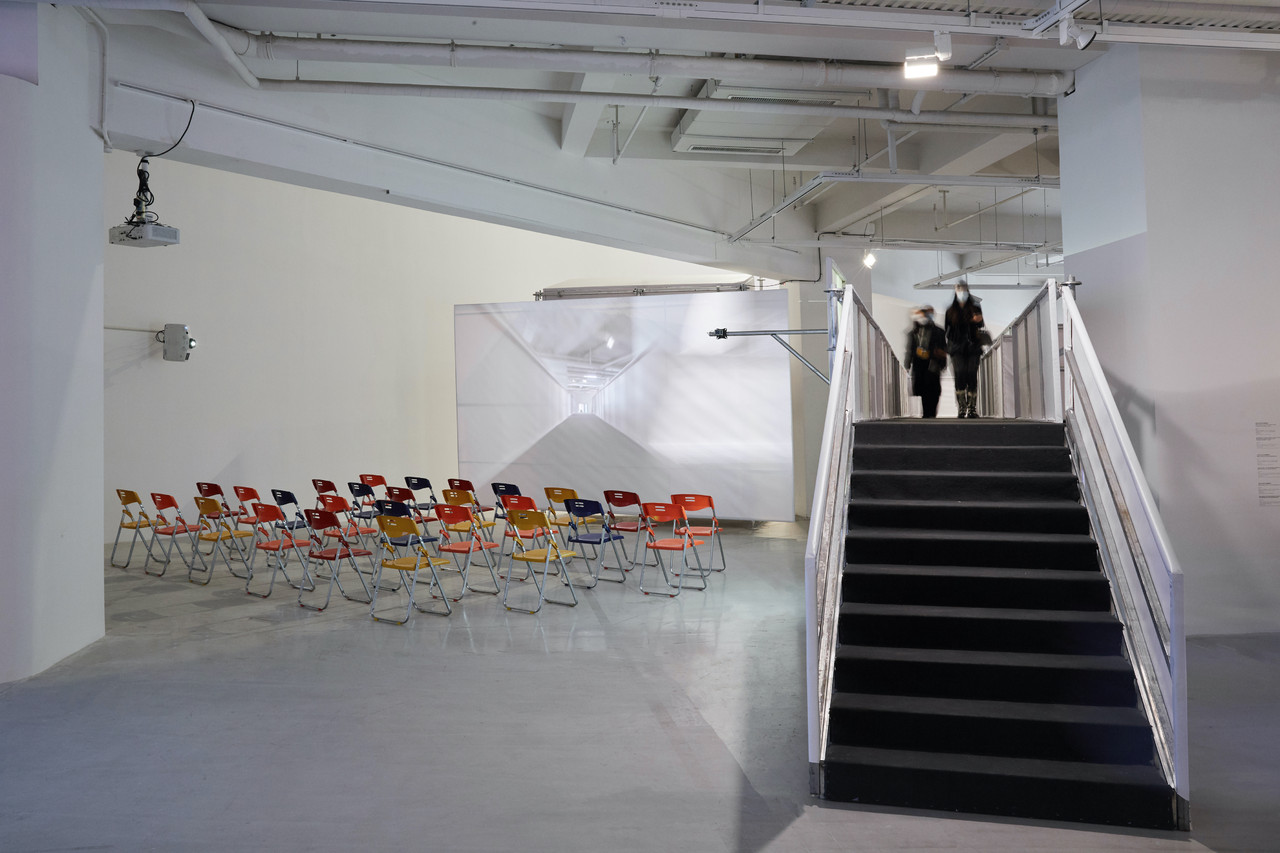

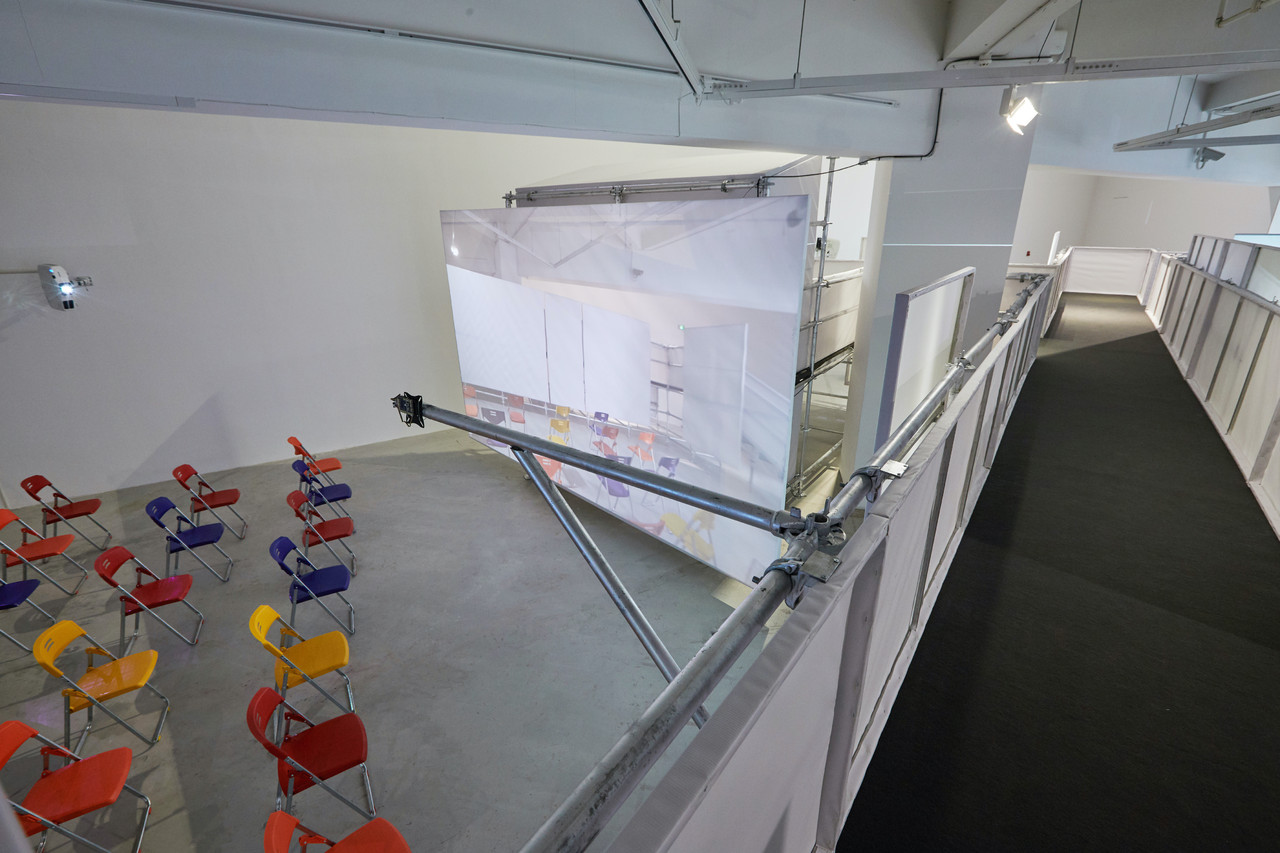
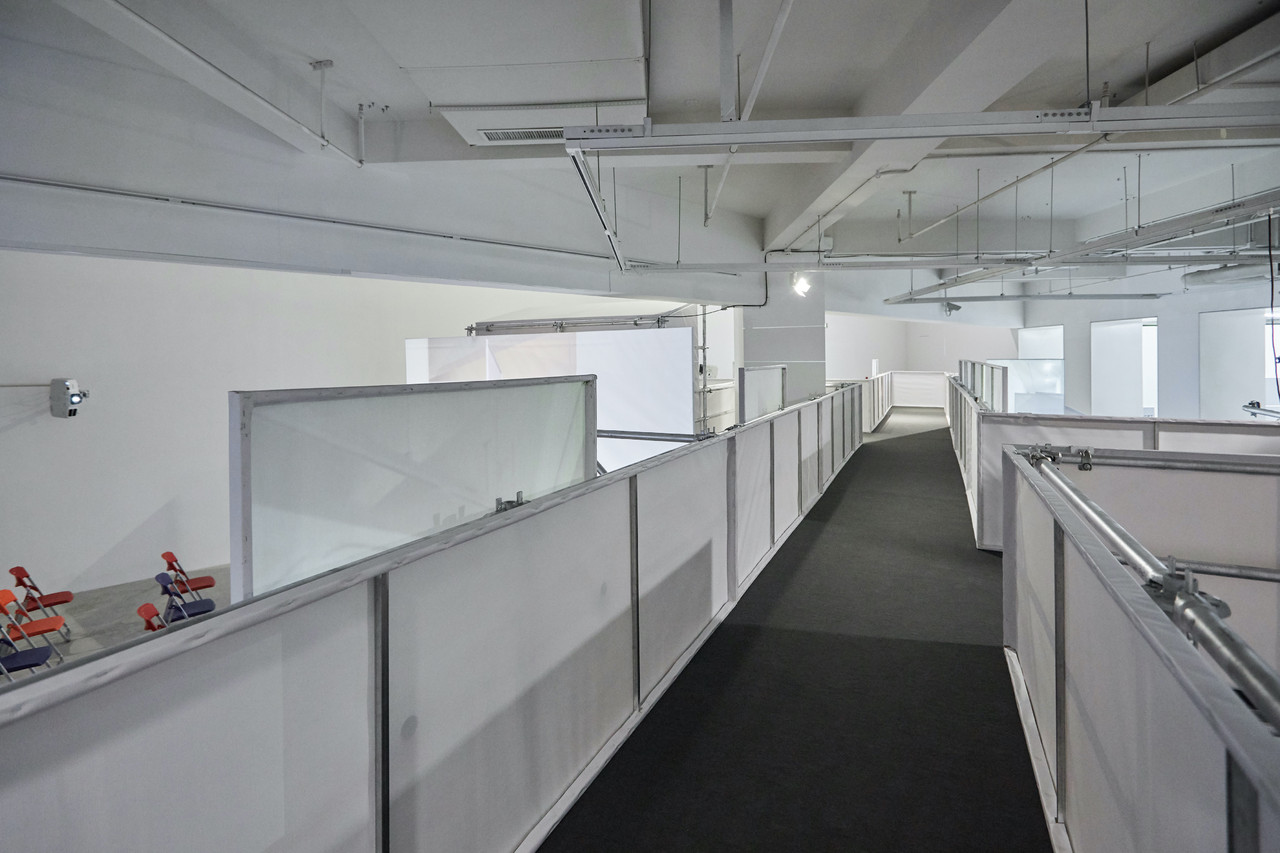
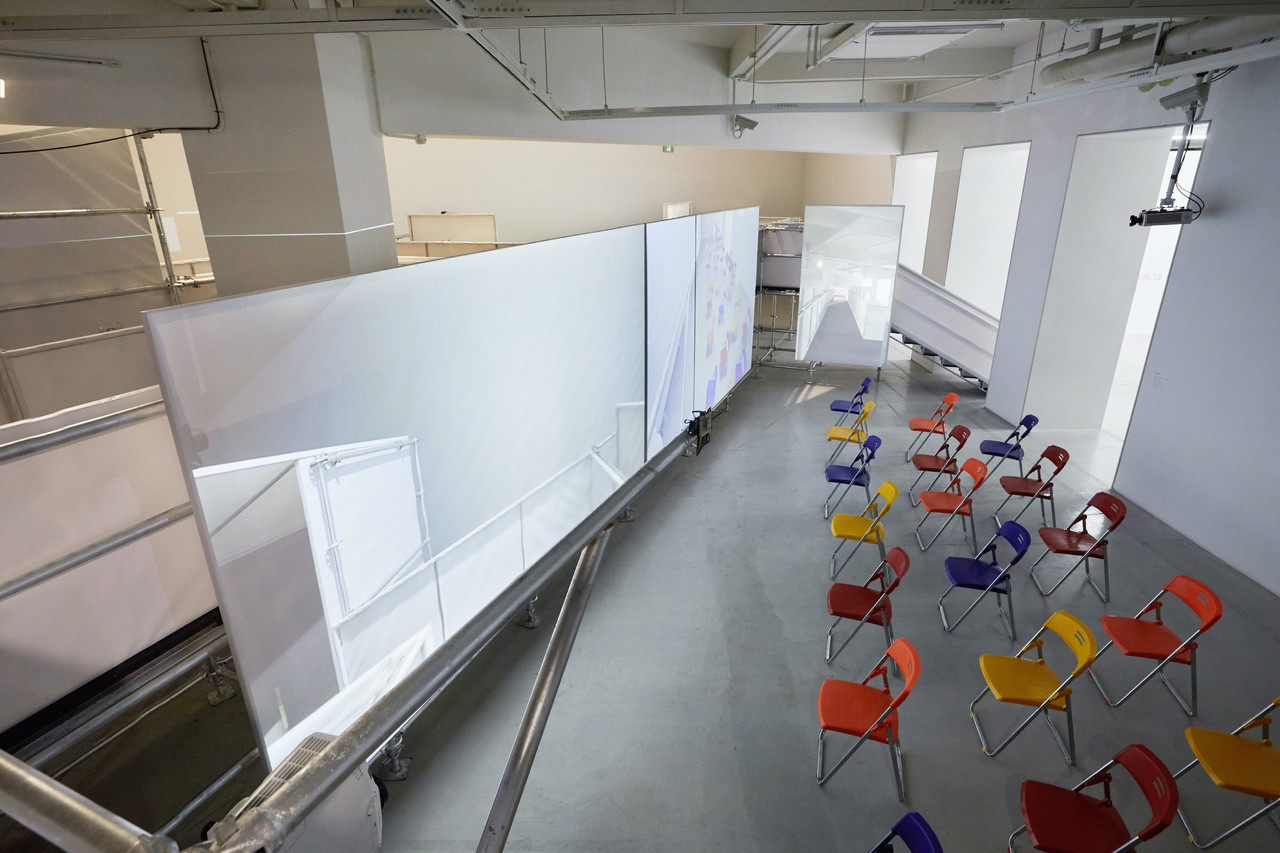

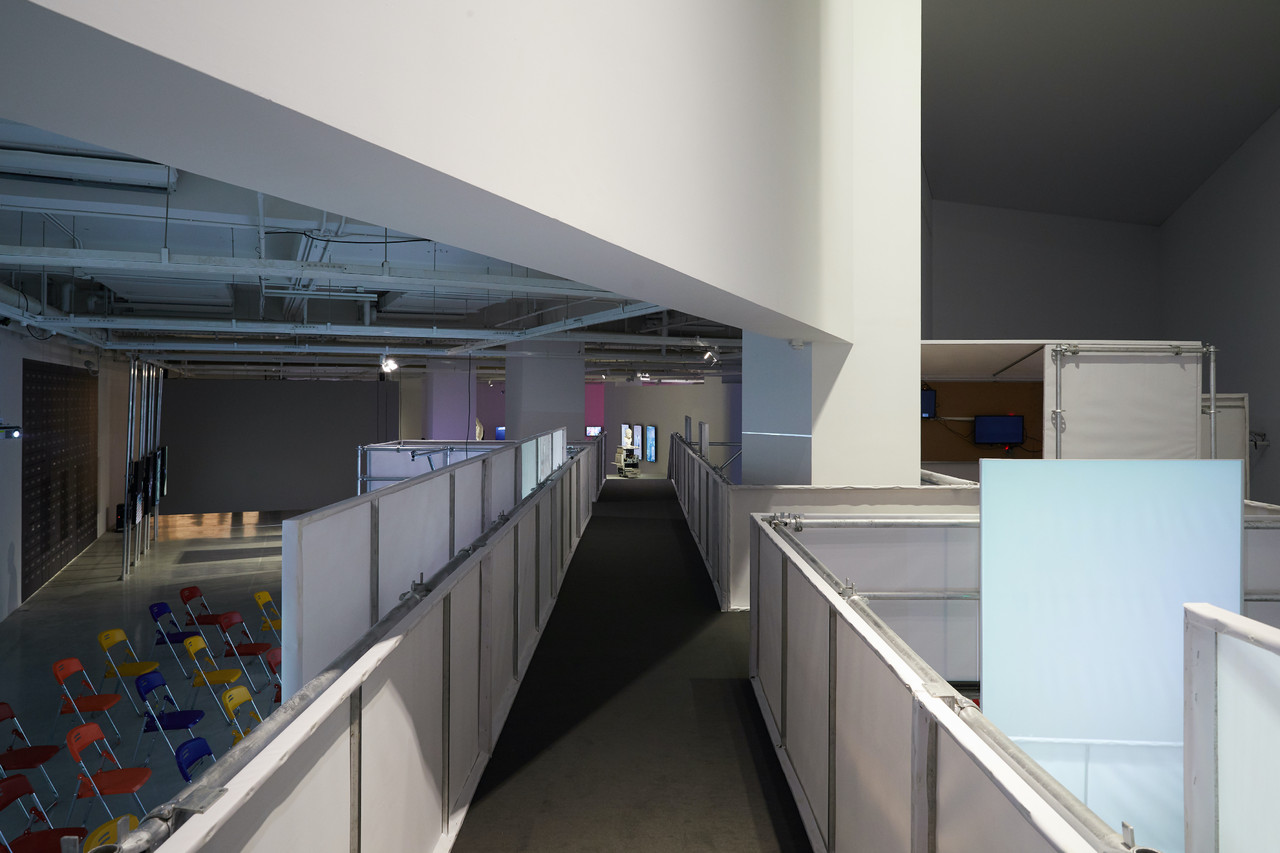
-----
Beneath the Skin, Between the Machines (exhibition, 01.22 - 04.22)
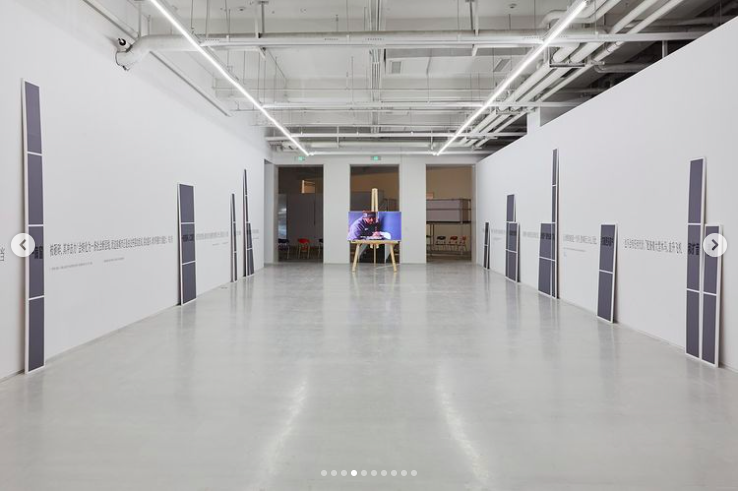
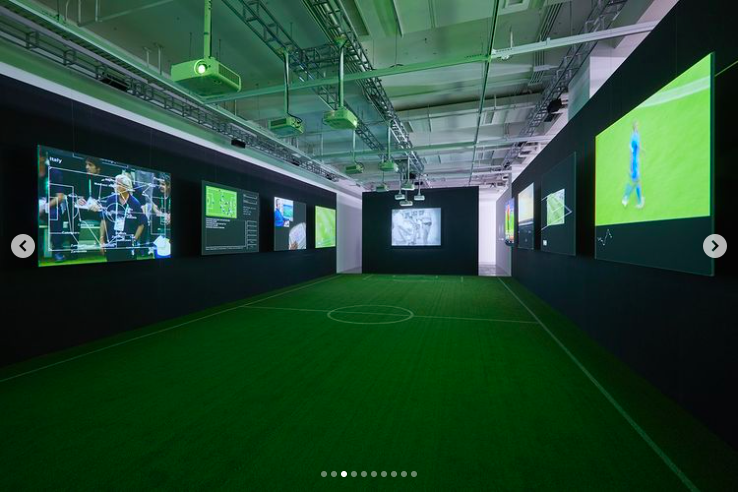
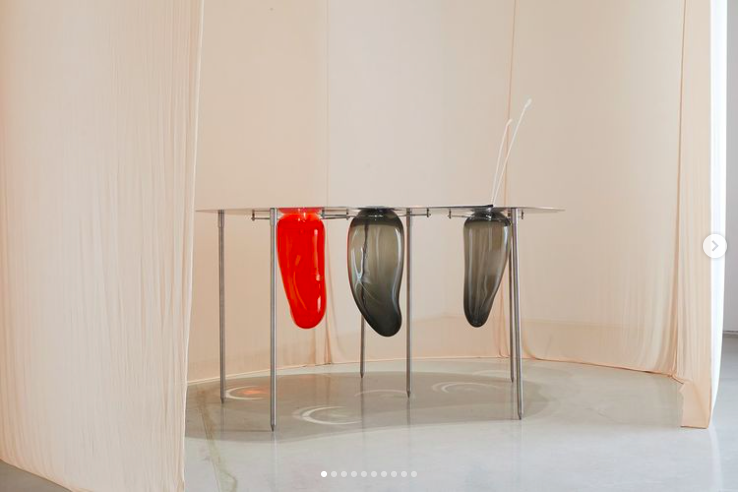
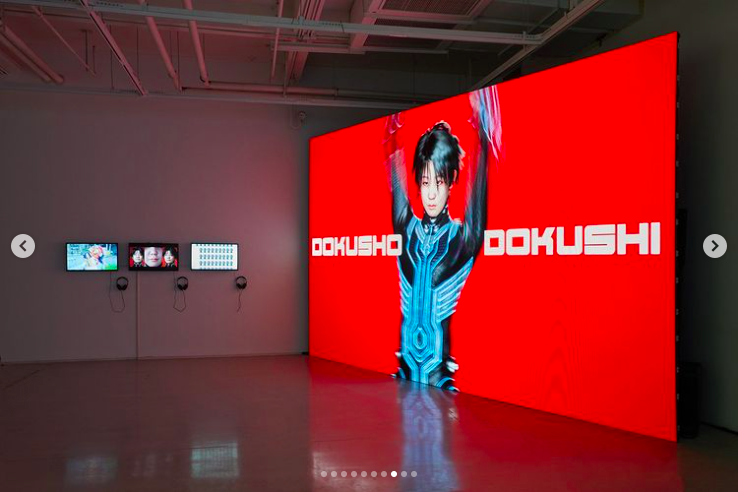

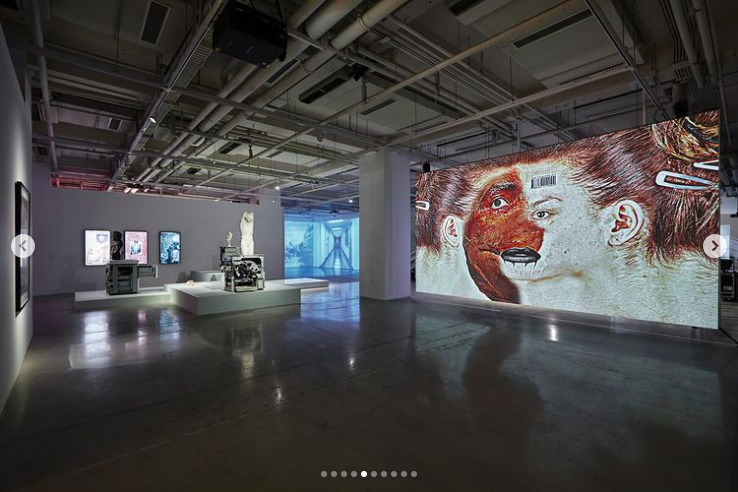
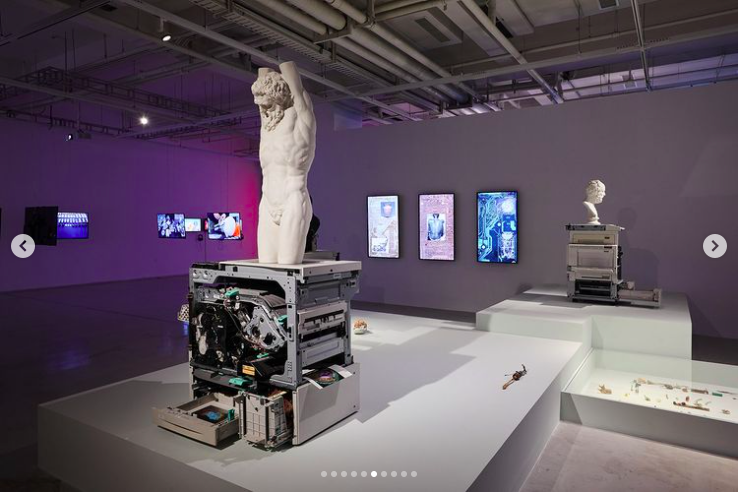

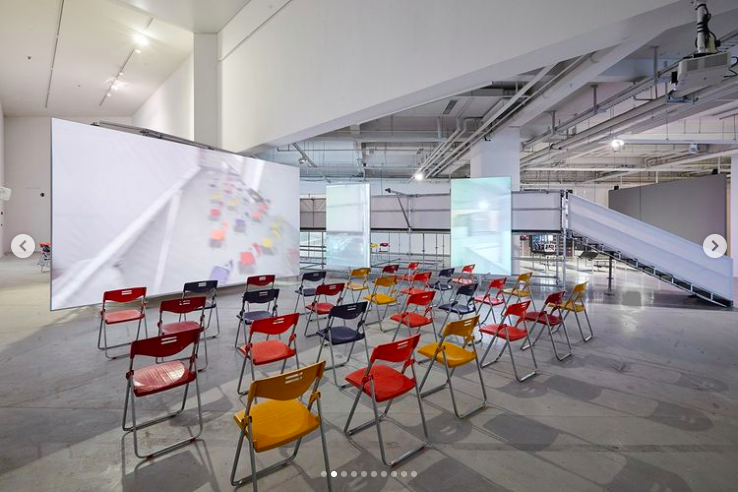
-----
Platform of Future-Past was realized with the support of Pro Helvetia.
Friday, December 03. 2021
Atomized (*) Functioning by fabric | ch, digital Paik exhibition with Nam June Paik Art Center and ECAL | #paik #augmented #automated #exhibition
Note: We had the chance at fabric | ch to initiate a new research / project last Spring, in collaboration with the Nam June Paik Art Center (warning: long loading time!) in South Korea and ECAL / University of Art and Design Lausanne (HES-SO).
In this context, we're having the opportunity to work with some of the amazing material of the museum's collection and archive. It contains some of Paik's major works (single & multi-channel video in particular), that have been difficult to see since the passing of the artist, and most of its archives.
The museum indeed has the largest collection Paik's video, as well as some important installations and a large primary and secondary material about the production of the artworks themselves. The research undertaken is looking to give access to this material in new ways and forms, out of the physical museum and through digital means. For this task, we're planning to further dig into the archives and look at works that were realized, or not, during the Fluxus period ("Symphony for 20 Rooms", "Exhibition of Music, Electronic Television").
The aim of this research is to work on automated curating and digital display (likely AR) of exhibitions at anybody's place (home, appartment, office, warehouse, "garage", etc.), resonating with the concept of "Viewing Rooms" and therefore the title of this first phase of the research: (Re-)Viewing Paik. We are seeking forms of personal exhibitions, for specific spatial configurations and in which the artworks organize their presence themselves, according to an objective understanding of the space.
To achieve these research objectives, we'll work with fabric | ch's software and ongoing project that allows us to automate the creation of environments, based on sensors inputs: Atomized (*) Functioning (pdf), which is based on customizable/scriptable algorithmic and AI procedures. In the specific case of (Re-)Viewing Paik, it is used for curation and exhibition design purposes, therefore Atomized (curatorial) Functioning (pdf). Like we already did for this exhibition at HeK, in 2019.
-----
By fabric | ch
Below are early tests with a digital transposition/reconstruction of TV Buddha (literally), the zen media buddha in between a glitched and mirrored digital environment containing other artworks (video and photographies of the famous 1963 exhibition: Exposition of Music - Electronic Television).
This early phase of the work will see us work with the pieces selected by Nam June Paik Art Center curator and archivst Sans Ae Park. These pieces were selected mainly to test different artwork types and durations into their new display setup.
...
Tuesday, October 05. 2021
"Automation algorithmiques et créolisations", revue Espace (Montréal, 2020) | #publications #AI #algorithms #automated
Note: an interview about the implications of AI in art and the work of fabric | ch in particular, between Nathalie Bachand (writer & independant curator), Christophe Guignard and myself (both fabric | ch). The exchange happened in the context of a publication in the art magazine Espace, it was fruitful and we had the opportunity to develop on recent projects, like the "Atomized" serie of architectural works that will continue to evolve, as well as our monographic exhibition at Kunshalle Éphémère, entitled Environmental Devices (1997 - 2017).
-----
By fabric | ch
Tuesday, September 21. 2021
"Essais climatiques" by P. Rahm, Ed. B2 (Paris, 2020) | #2ndaugmentation #essay #AR #VR
Note: it is with great pleasure and interest that I read recently one of Philippe Rahm's last publication, "Essais climatiques" (published in French, by Editions B2), which consists in fact in a collection of articles published in the past 10+ years in various magazines, journals and exhibition catalogs. It is certainly less developed than the even more recent book, "L'histoire naturelle de l'architecture" (ed. Pavillon de l'Arsenal, 2020), but nonetheless an excellent and brief introduction to his thinking and work.
Philippe Rahm's call for the "return" of an "objective architecture", climatic and free of narrative issues, is of great interest. Especially at a time when we need to reduce our CO2 emissions and will need to reach energy objectives of slenderness. The historical reading of the postmodern era (in architecture), in relation to oil, vaccines and antibiotics is also really valuable in this context, when we are all looking to move forward this time in cultural history.
I also had the good surprise, and joy, to see the text "L'âge de la deuxième augmentation" finally published! It was written by Philippe back in 2009 probably, about the works of fabric | ch at the time, when we were preparing a publication that finally never came out... Though this text will also be part of a monographic publication that is expected to be finalized and self-published in 2022.
Via fabric | ch
-----
Tuesday, August 31. 2021
Entangled Realities, HeK exhibition catalogue (eds. S. Himmelsbach & B. Magrini), C. Merian Verlag (Basel, 2021) | #AI #art #environments
Note: this publication was released at the occasion of the exhibition Entangled Realities - Living with Artificial Intelligence, curated by Sabine Himmelsbach & Boris Magrini at Haus der elektronischen Künste, in Basel.
The project Atomized (curatorial) Functioning (pdf), part of the Atomized (*) Functioning serie, was presented, used and debatedi n this context.
-----
By Patrick Keller
Wednesday, August 25. 2021
Cloud of Cards – A design research publication, ed. ECAL, Hemisphere & Frame magazines (2019 – 2020) | #design #research #datacenters #infrastructure
Note: still catching up on past publications, these ones (Cloud of Cards and related) are "pre-covid times", in Print-on-Demand and related to a the design research on data and the cloud led jointly between ECAL / University of Art & Design, Lausanne and HEAD - Genève (with Prof. Nicolas Nova). It concerns mainly new propositions for hosting infrastructure of data, envisioned as "personal", domestic (decentralized) and small scale alternatives. Many "recipes" were published to describe how to creatively hold you data yourself.
It can also be accessed through my academia account, along with it's accompanying publication by NIcolas Nova: Cloud of Practices.
-----
By Patrick Keller
--
The same research was shortly presented in the Swiss journal Hemispheres, as well as in the international magazine Frame:
--
Making Sense – A publication about design research, (ed. D. Fornari), ECAL (Lausanne, 2017) | #iiclouds #datacenter #research
Note: to catch up on time and work with the documentation of our past publications, this one was published already some time ago by ECAL / University of Art and Design, Lausanne (HES-SO), but still a topical issue (> how to redesign/codesign datacenters and the access to personal data in both a sustainable and "fair" way for the end user?)
We're currently working on an evolution of this project that involves the recent decentralized technologies that emerged in the meantime (a.k.a "blockchains", "NFT", etc.). In the meantime, we are preparing academic talks on the subject with the media sociologist Joël Vacheron, who will be invoved in the next phases of the research -- would they happen... --
-----
By Patrick Keller
(sorry for the strange colors on these 3 img. below...)
Wednesday, July 14. 2021
Interview with Patrick Keller – fabric | ch, HEK Blog (Basel, 2020) | #satellite #daylight #device
Note: Patrick Keller (fabric | ch) was in discussion with curator Sabine Himmelsbach, from Haus der elektronischen Künste in Basel (CH), about their new acquisition for the collection of the Museum: Satellite Daylight 47°33'N.
The piece will be displayed permanently in the public space of the HeK. At least until breakdown... But interestingly, it is also part of a whole program of digital conservation at HeK that should prevent its technological collapse, for which we had to follow a tight protocol of documentation and provide the source code pf the work.
-----

fabric | ch, Satellite Daylight, 47°33‘N, 2020, Vue de l'installation durant «Shaping the Invisible World», 2021, HeK. Photo.: P. Keller.
Shooting set in preparation ...

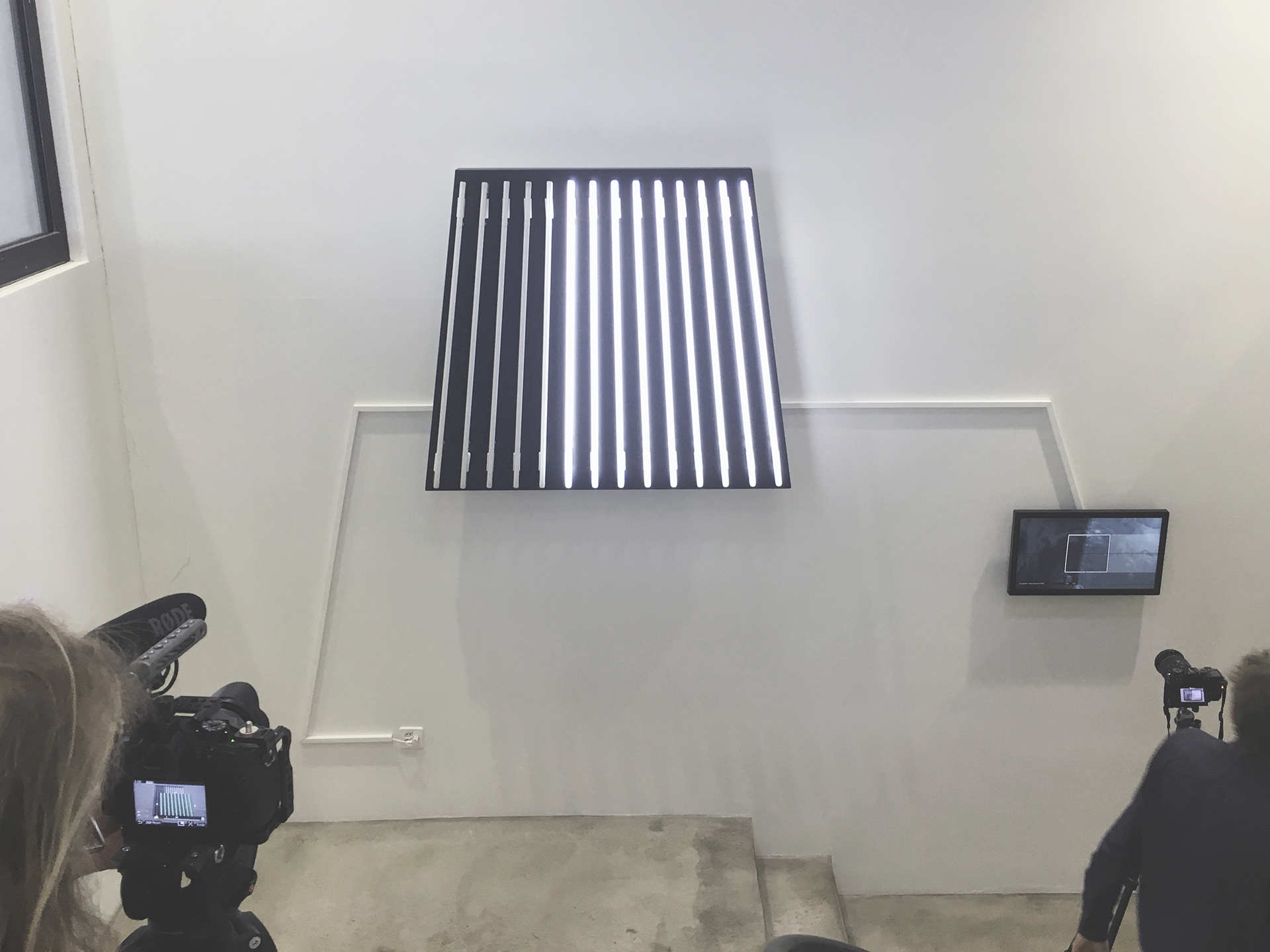
Followed by our discussion with Sabine Himmelsbach ... (with a lot of reverb in the staircase!)
-----
Via Haus der elektronischen Künste (blog)
Patrick Keller of fabric | ch, a studio for architecture, interaction and research in Lausanne, provides thrilling insight about the new work installed in the staircase of HeK.
Patrick Keller of fabric | ch, a studio for architecture, interaction and research in Lausanne, provides information about the new work in an interview. The installation Satellite Daylight, 47°33’N, commissioned for the HeK collection, simulates the light registered by an imaginary meteorological satellite orbiting the earth at the latitude of Basel at a speed of 7541m/s.
Monday, June 28. 2021
Exhibition "Shaping the Invisible World" at the Haus der elektronischen Künste | #exhibitions #countercartography
Note: fabric | ch was part of the exhibition Shaping the Invisible World, in the middle of the world pandemic (03.03 - 23.05.21).
A new creation, Satellite Daylight 47°33'N was exhibited at this occasion (img. below), which was also acquiredby HeK and enters it's collection at the same time.
Among others, the exhibition displays works by Tega Brain, Bengt Sjölén & Julian Oliver, Bureau d'études, James Bridle, Trevor Paglen, Quadrature, etc. and was curated by Boris Magrini and Christine Schranz.
-----
Via Haus der eletronischen Künste
The exhibition «Shaping the Invisible World – Digital Cartography as an Instrument of Knowledge» examines, through cartography, the representational forms of the map as a tool between knowledge and technology. The works of the artists on view negotiate the meaning of the map as a gauge of our digital, technological and global society.
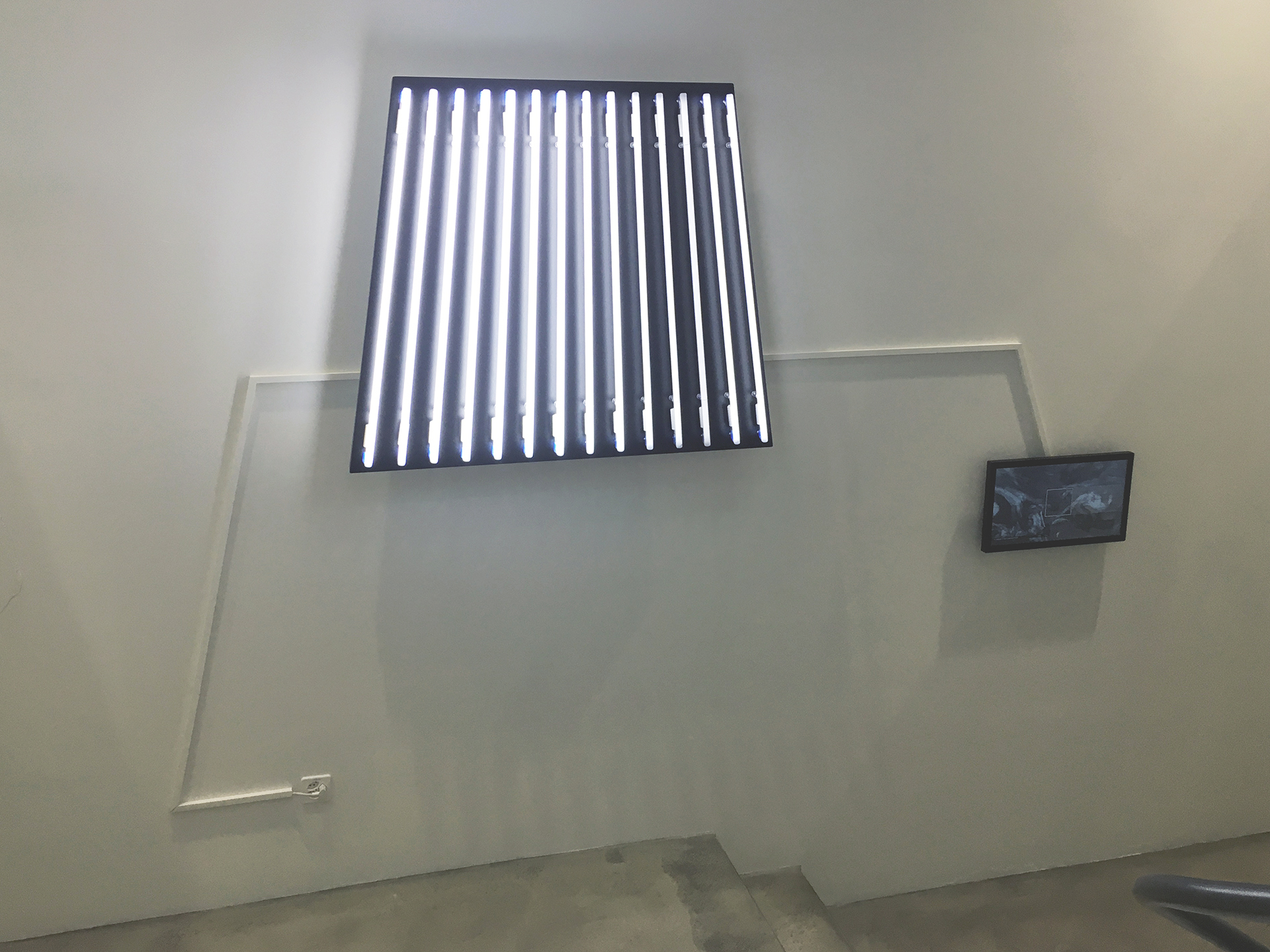
(Photo.: fabric | ch)

(Photo.: T. Marti)
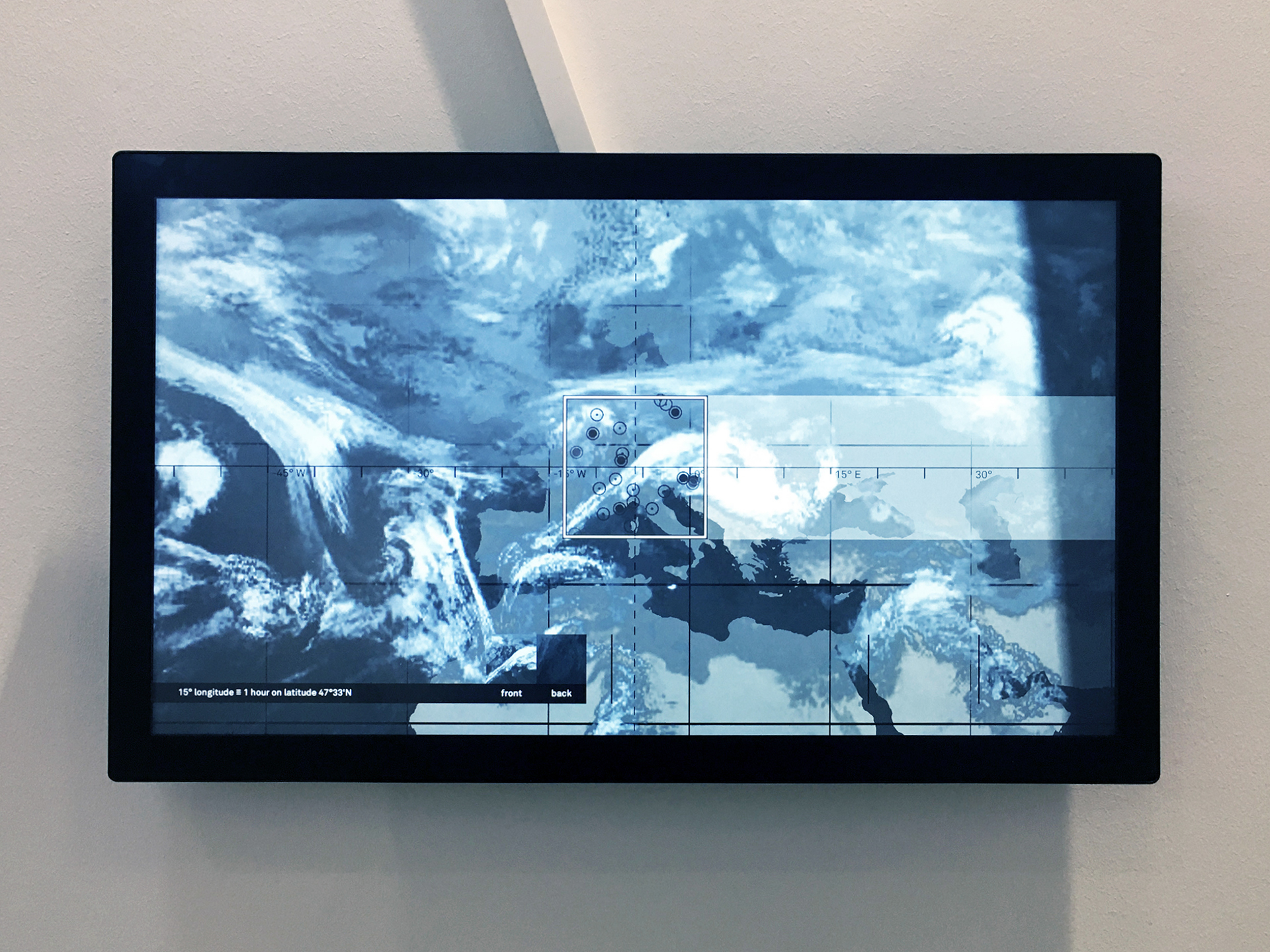
fabric | ch, Satellite Daylight 47°33'N (2021) at the Haus der elektronischen Künste (photo.: fabric | ch).
Cartography – the science of surveying and representing the world – developed in antiquity and provided the springboard for communication and economic exchange between people and cultures around the globe. At the same time, maps are undeniably never neutral, since their creation inherently involves interpretation and imagination. Today, it is IT companies that drive progress in the field and drastically influence our views of the world and how we communicate, navigate and consume globally. While map production has become more democratic, digital maps are nevertheless increasingly used for political and economic manipulation. Questions of privacy, authorship, economic interests and big data management are more poignant than ever before and closely intertwined with contemporary cartographic practices.
Today’s maps not only depict, but also document, negotiate and visualize subjective views of the world. But are these maps more democratic? Who benefits from self-determined productions and what consequences do they lead to?
The strategies in digital mapping and cartography employed by the artists presented in Shaping the Invisible World – Digital Cartography as an Instrument of Knowledge are subversive. Their spectacular panoramas and virtual scenarios reveal how the digital technologies culturally affect our understanding of the world.
Navigating between subversive cartography and digital mapping, the exhibition puts the spotlight on the fascination of maps in relation to the democratization of knowledge and appropriation. By uncovering hidden realities, scarcely visible developments and possible new social relationships within a territory, the artists delineate the evolution of invisible worlds.
-
Artists: Studio Above&Below, Tega Brain & Julian Oliver & Bengt Sjölén, James Bridle, Persijn Broersen & Margit Lukács, Bureau d'études/ Collectif Planète Laboratoire, fabric | ch, Fei Jun, Total Refusal (Robin Klengel & Leonhard Müllner), Trevor Paglen, Esther Polak & Ivar Van Bekkum, Quadrature, Jakob Kudsk Steensen
Curators: Boris Magrini and Christine Schranz
(View the pictures of the exhibition directly on HeK's website).
fabric | ch, Satellite Daylight 47°33‘N | #luminosity #daylight #device #environment
Note: A new work by fabric | ch has been commissionned and aquired by the Haus der elektronischen Künste (HeK) in Basel for the museum's collection, part of the Satellite Daylight serie of "environmental devices".
It is the second work of fabric | ch that enters the collection, after a serie of four videos related to Satellite Daylight and entitled Satellite Daylight Pavilion. We are glad to join artists in the collection like Jodi, mediengruppe!Bitnick, Etoy, ... and also former students or colleagues at ECAL/University of Art and Design Lausanne (Juerg Lehni, Gisin & Vanetti, FragmentIn)!
This new artwork is entitled Satellite Daylight 47°33'N, and circles in fictious and continous way around the 47°33'N latitude -- while acquiring live environmental data about daylight, light intensity, nebulosity and cloud cover that drive the luminous display. --
This continuous circonvolution, at the speed of a real Earth Satellite and that triggers 16 nights and days per regular day on Earth, produces a new combined daylight at the point of installation, both local and internationally mediated.
Satellite Daylight's is an open serie of unique artworks, each located on a different latitude.
Via fabric | ch
-----
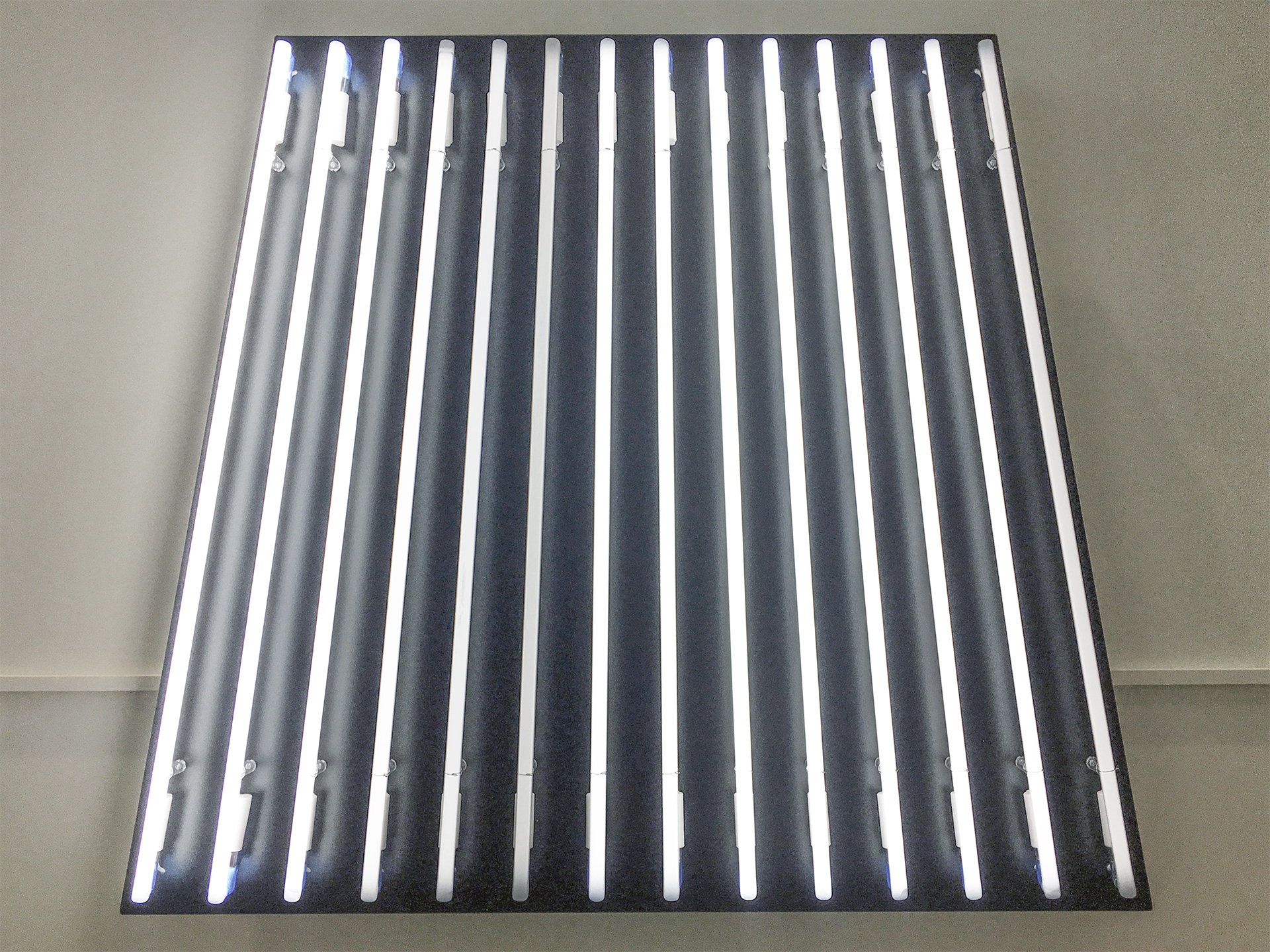


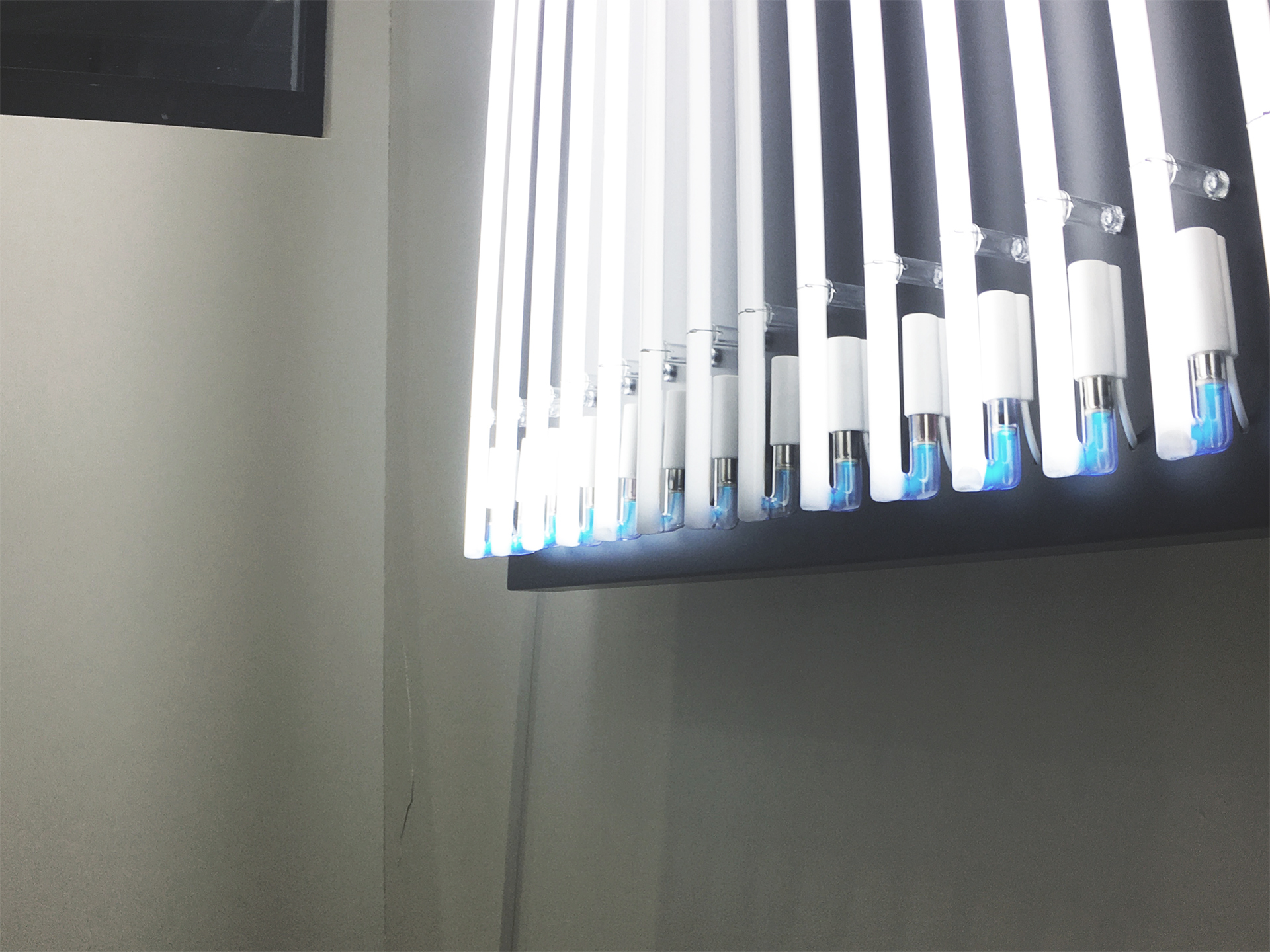
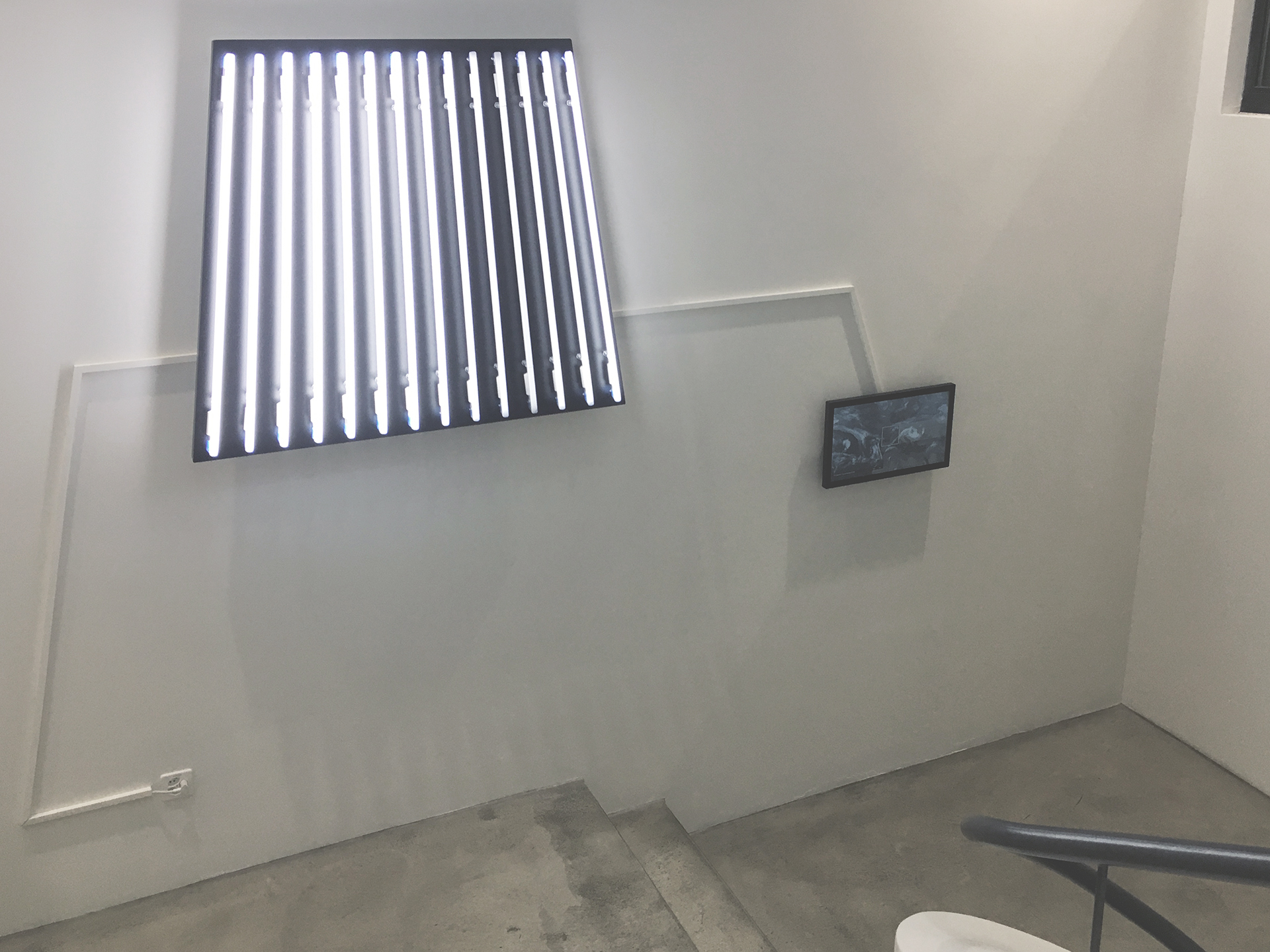
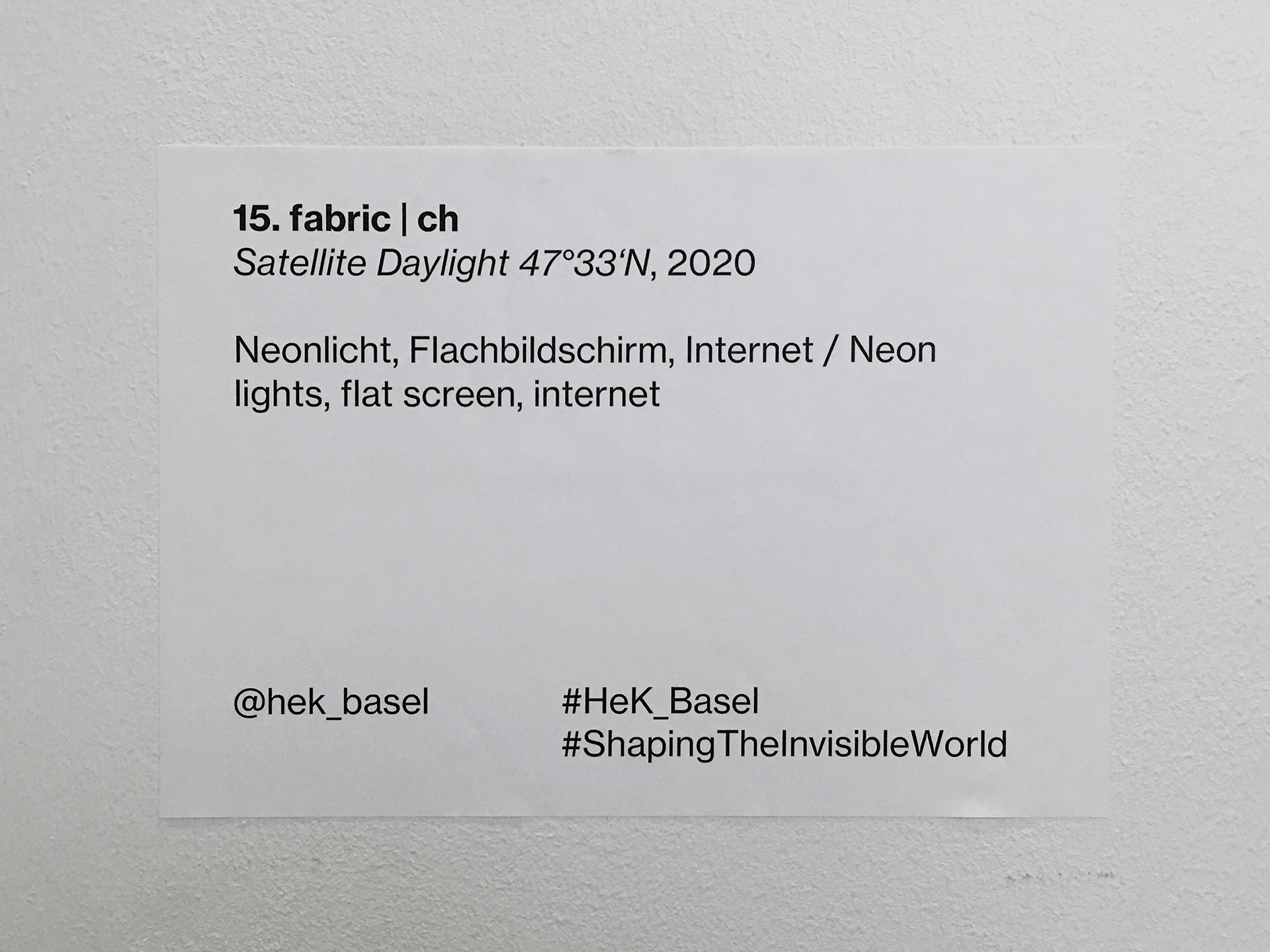
(Photo.: P. Keller)
fabric | rblg
This blog is the survey website of fabric | ch - studio for architecture, interaction and research.
We curate and reblog articles, researches, writings, exhibitions and projects that we notice and find interesting during our everyday practice and readings.
Most articles concern the intertwined fields of architecture, territory, art, interaction design, thinking and science. From time to time, we also publish documentation about our own work and research, immersed among these related resources and inspirations.
This website is used by fabric | ch as archive, references and resources. It is shared with all those interested in the same topics as we are, in the hope that they will also find valuable references and content in it.
Quicksearch
Categories
Calendar
|
|
July '25 | |||||
| Mon | Tue | Wed | Thu | Fri | Sat | Sun |
| 1 | 2 | 3 | 4 | 5 | 6 | |
| 7 | 8 | 9 | 10 | 11 | 12 | 13 |
| 14 | 15 | 16 | 17 | 18 | 19 | 20 |
| 21 | 22 | 23 | 24 | 25 | 26 | 27 |
| 28 | 29 | 30 | 31 | |||

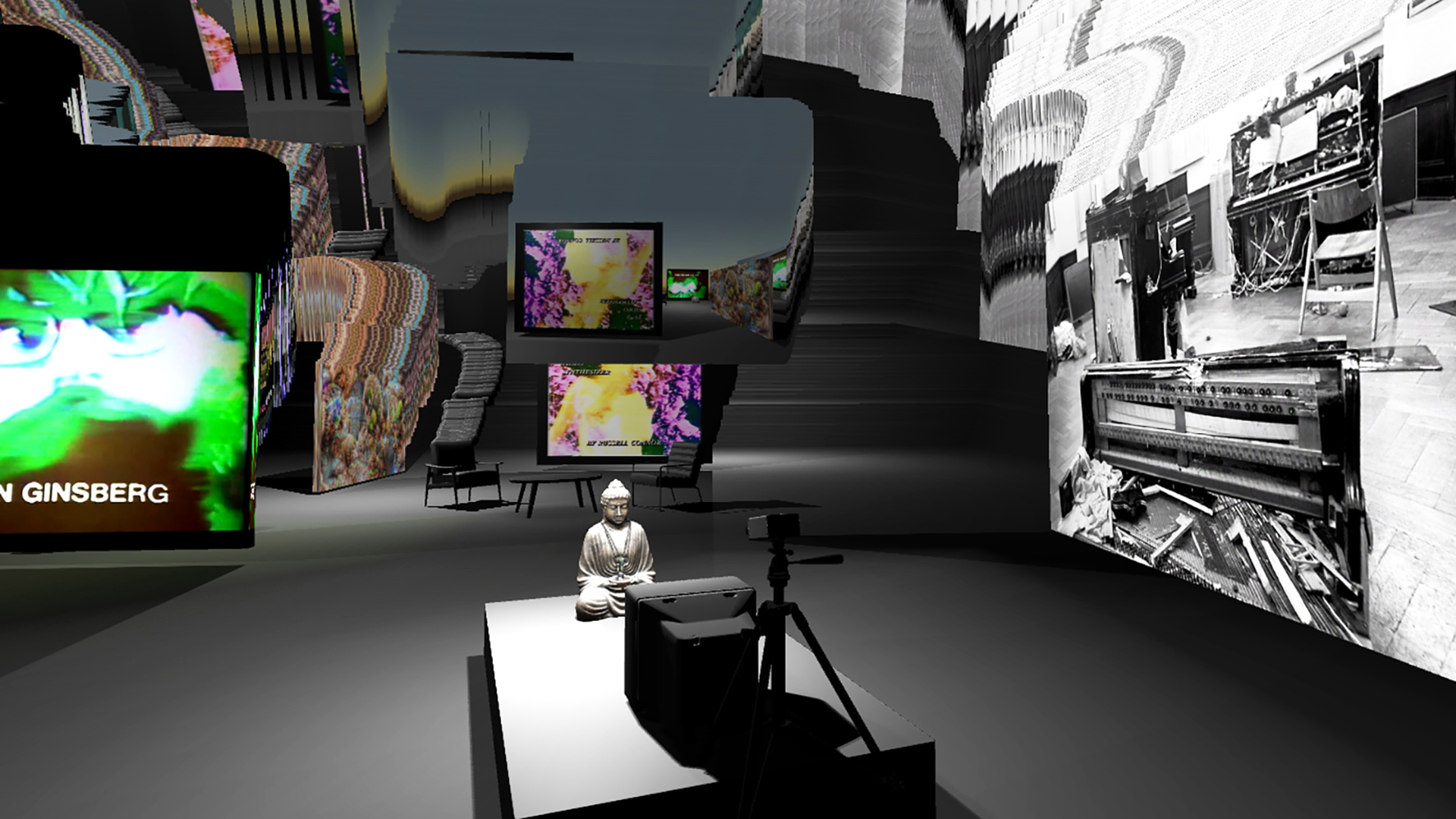
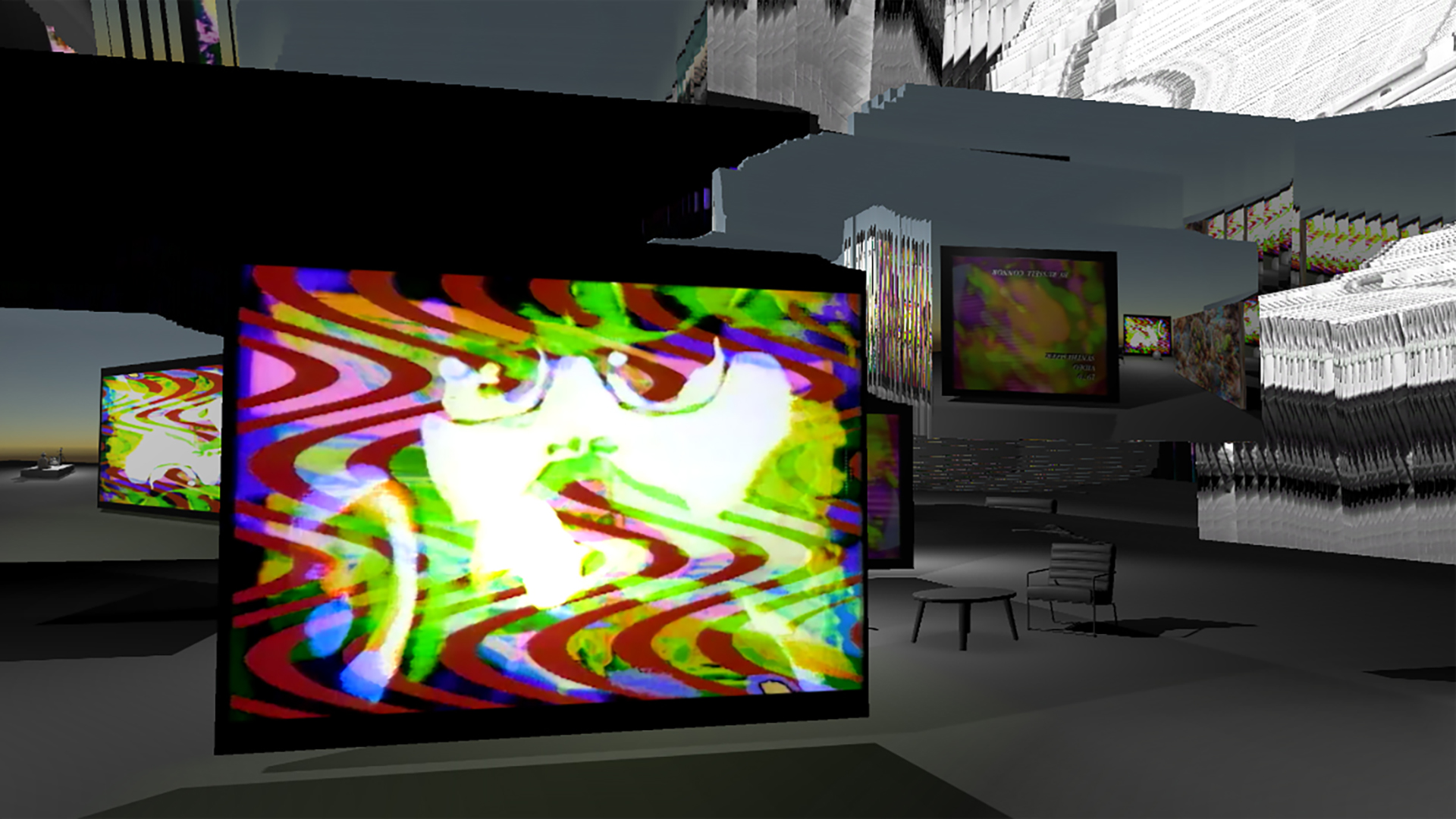
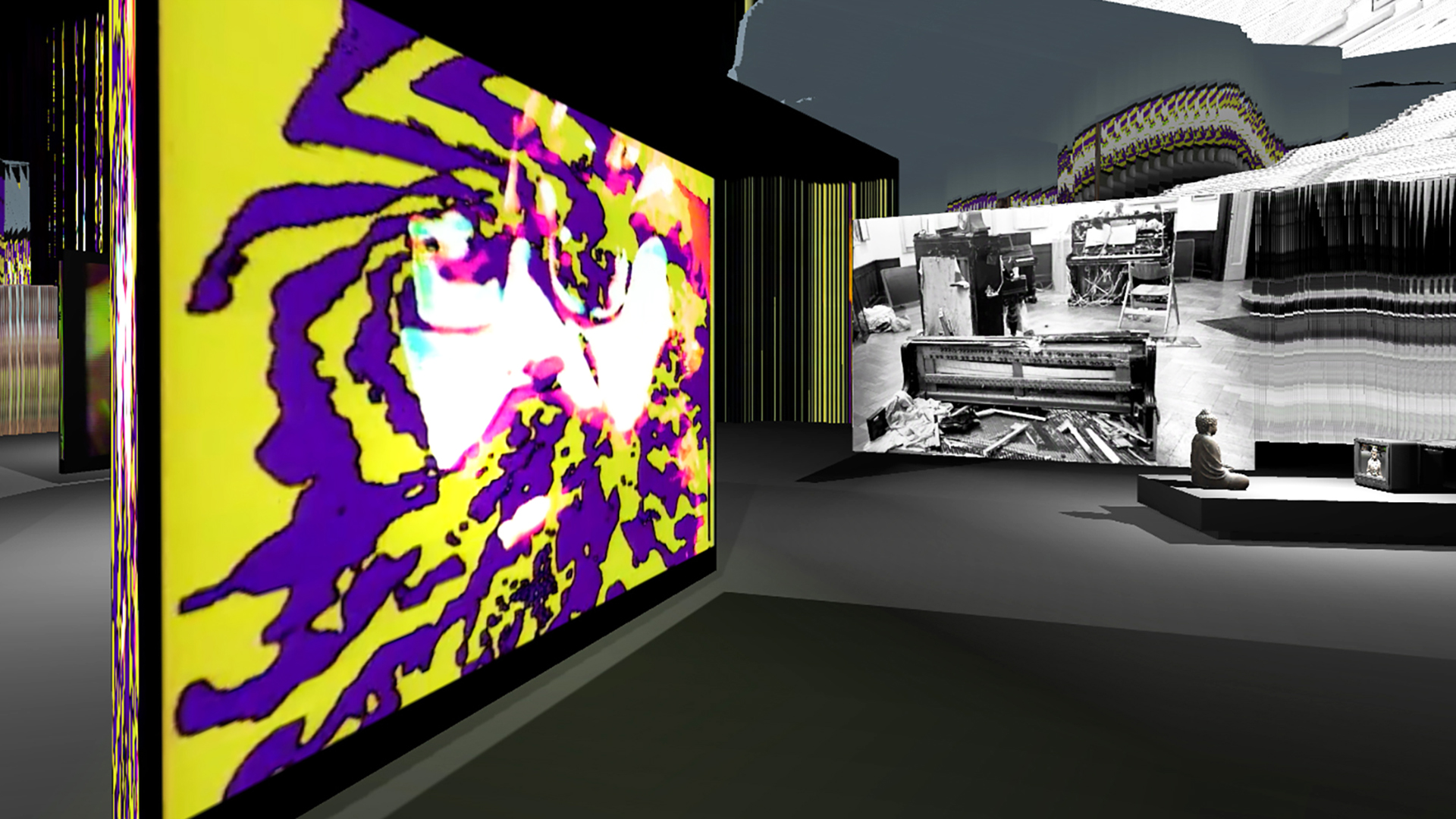
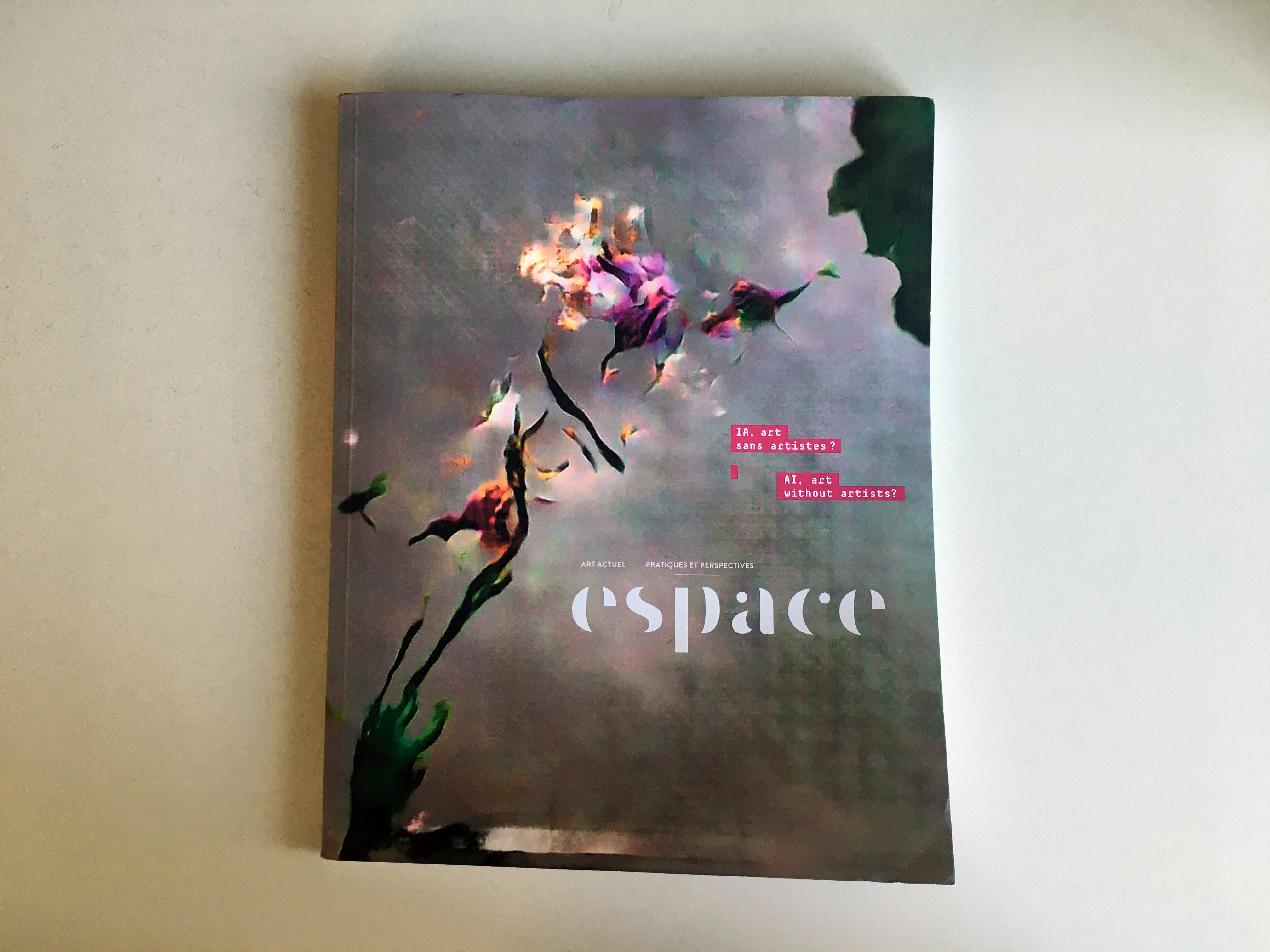
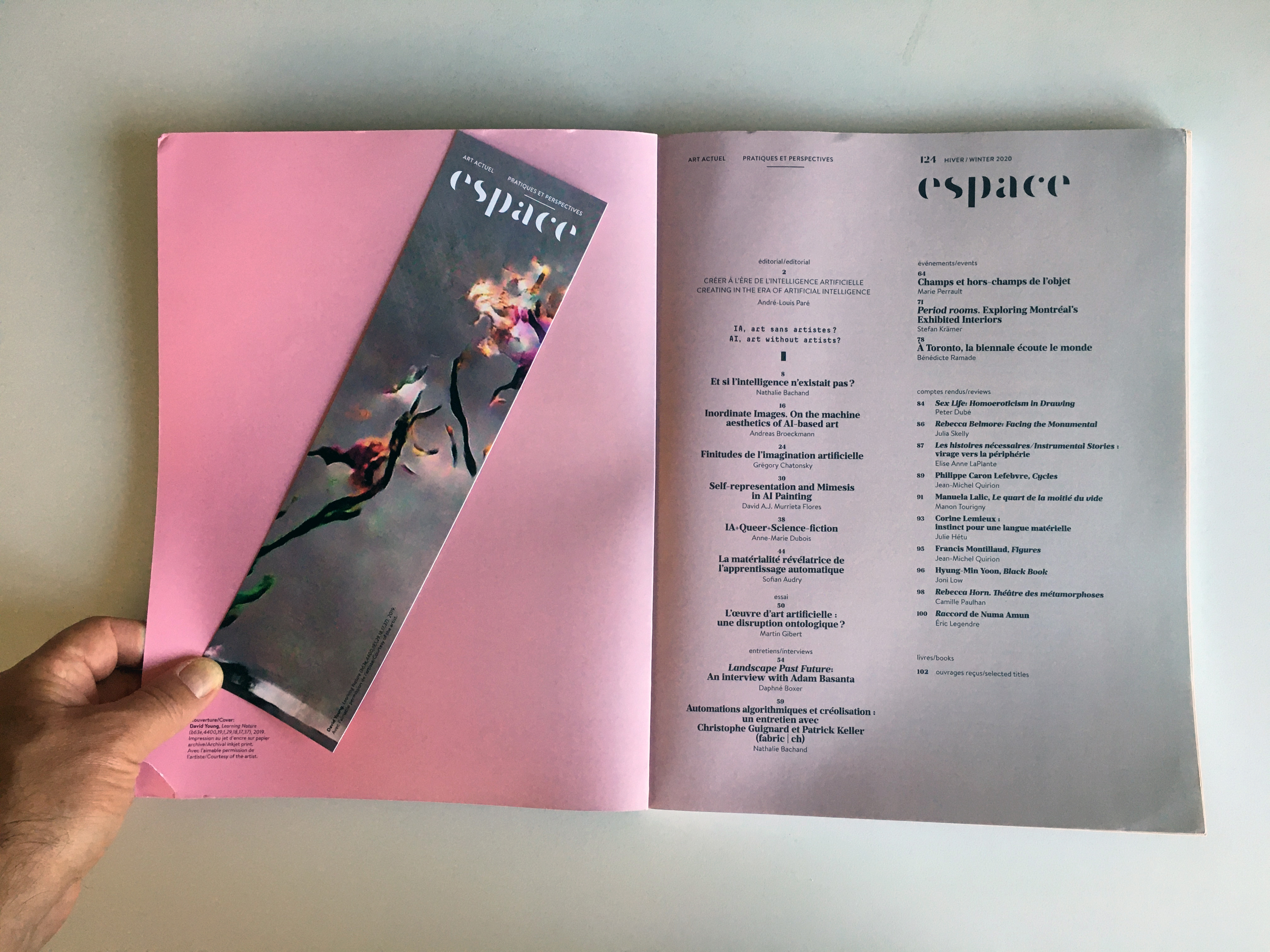
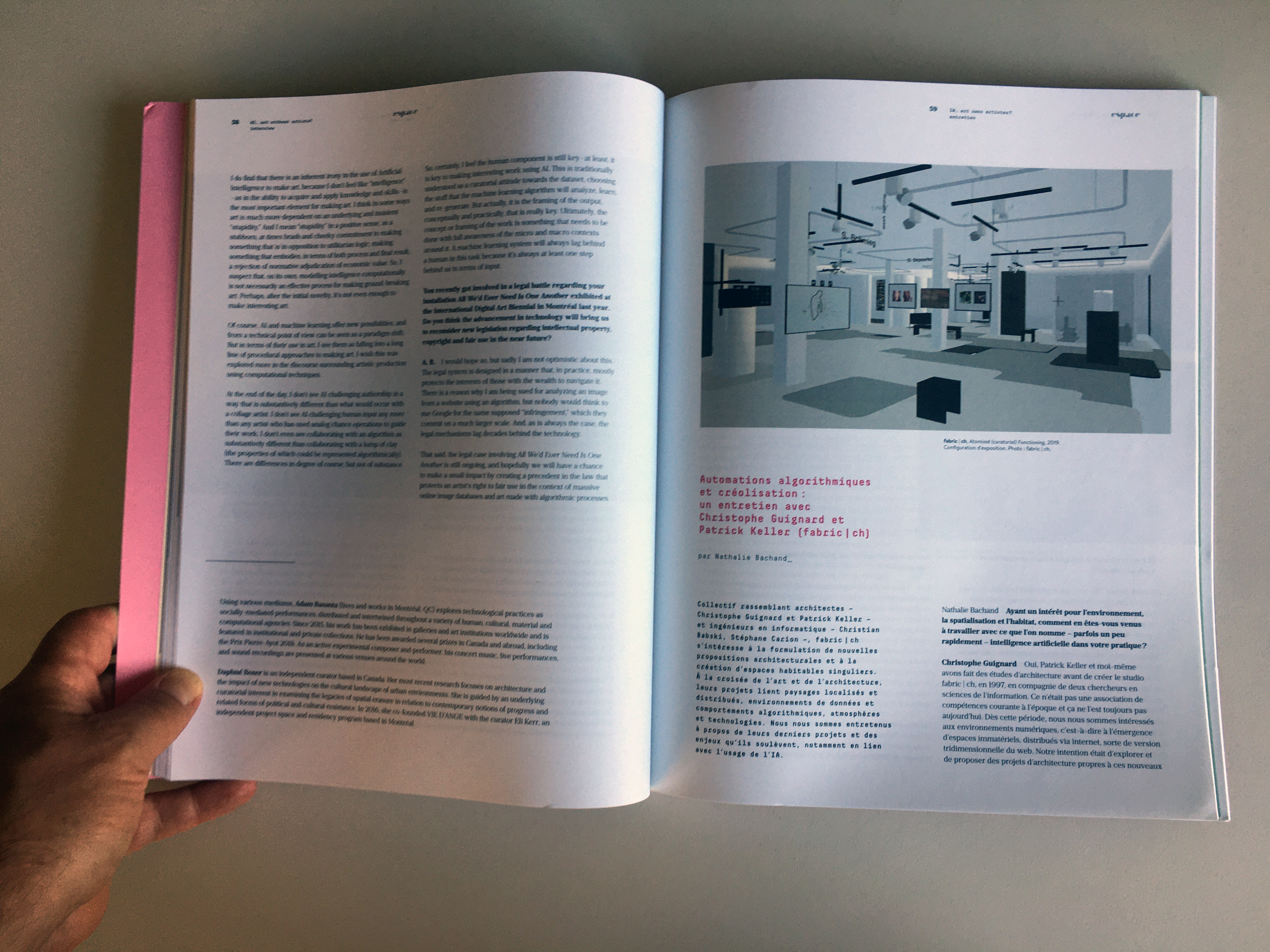
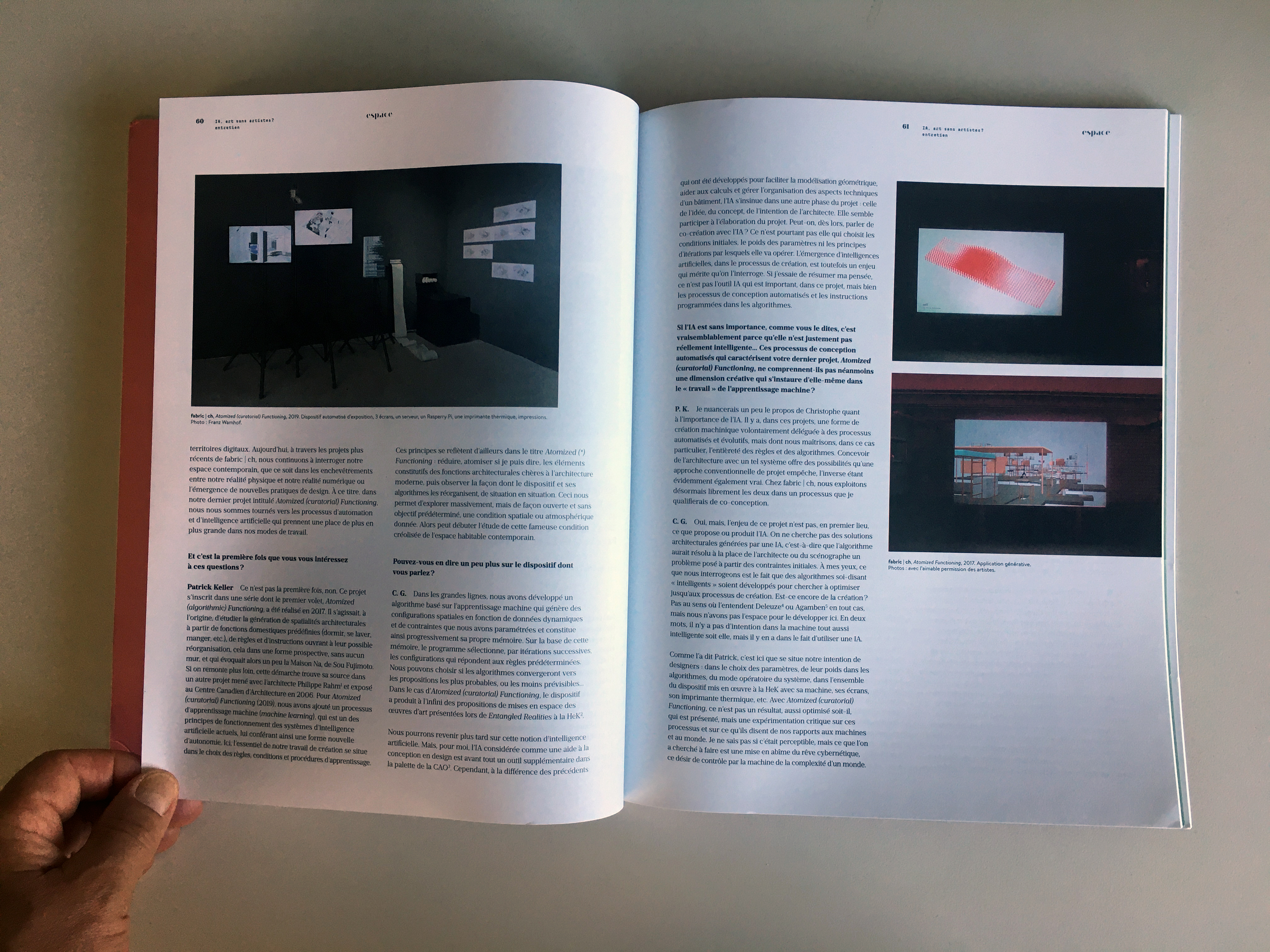

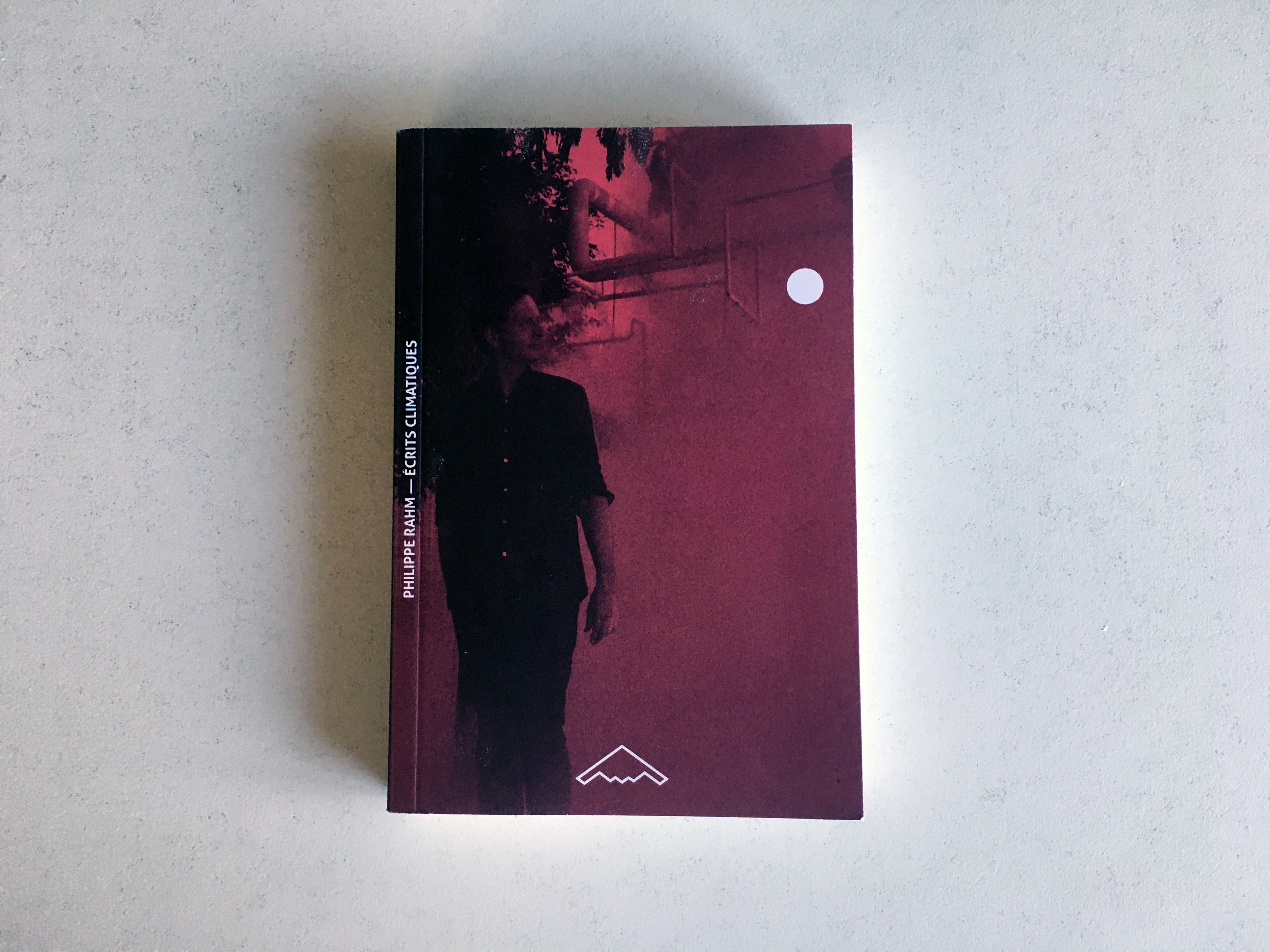
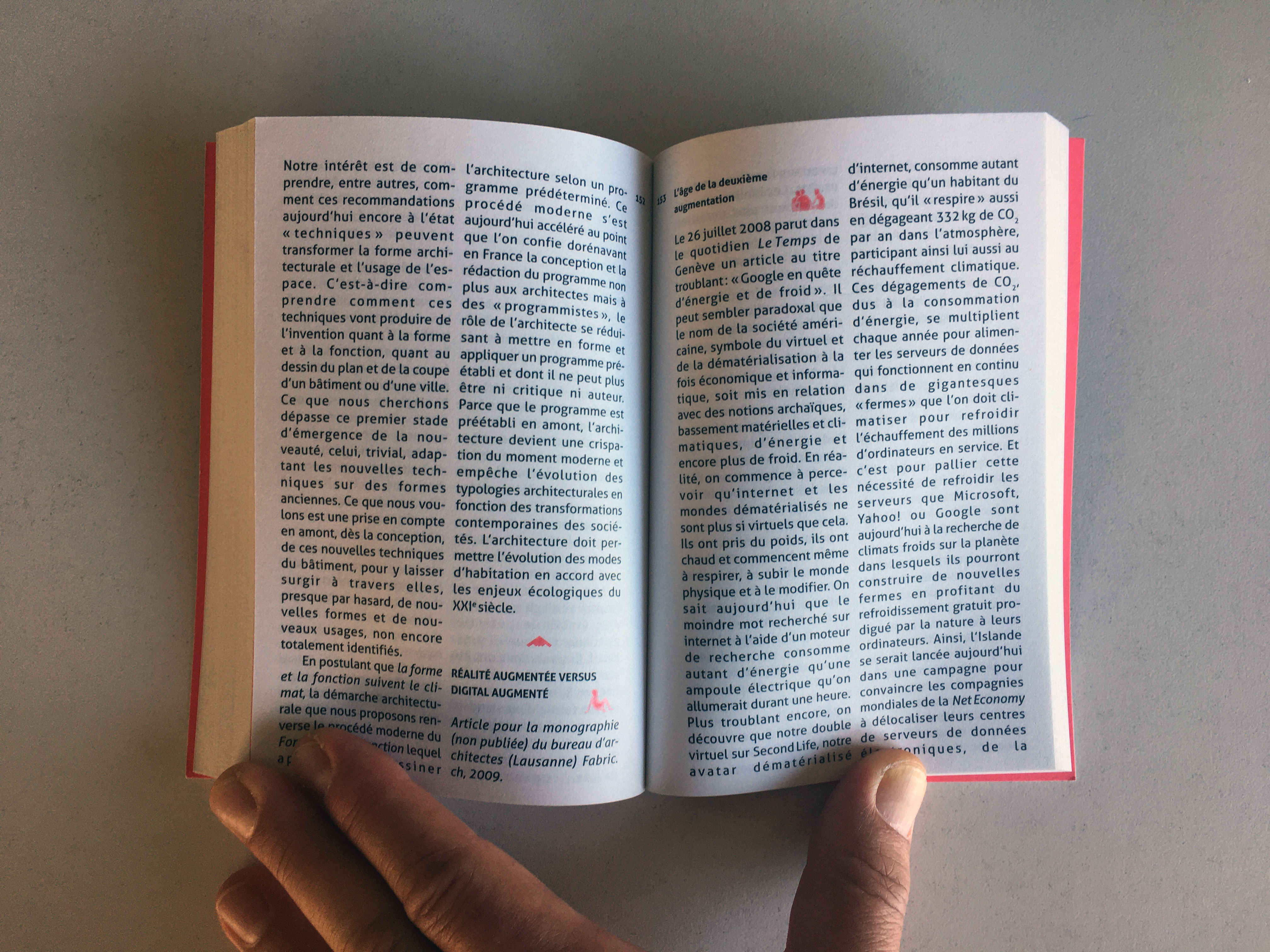

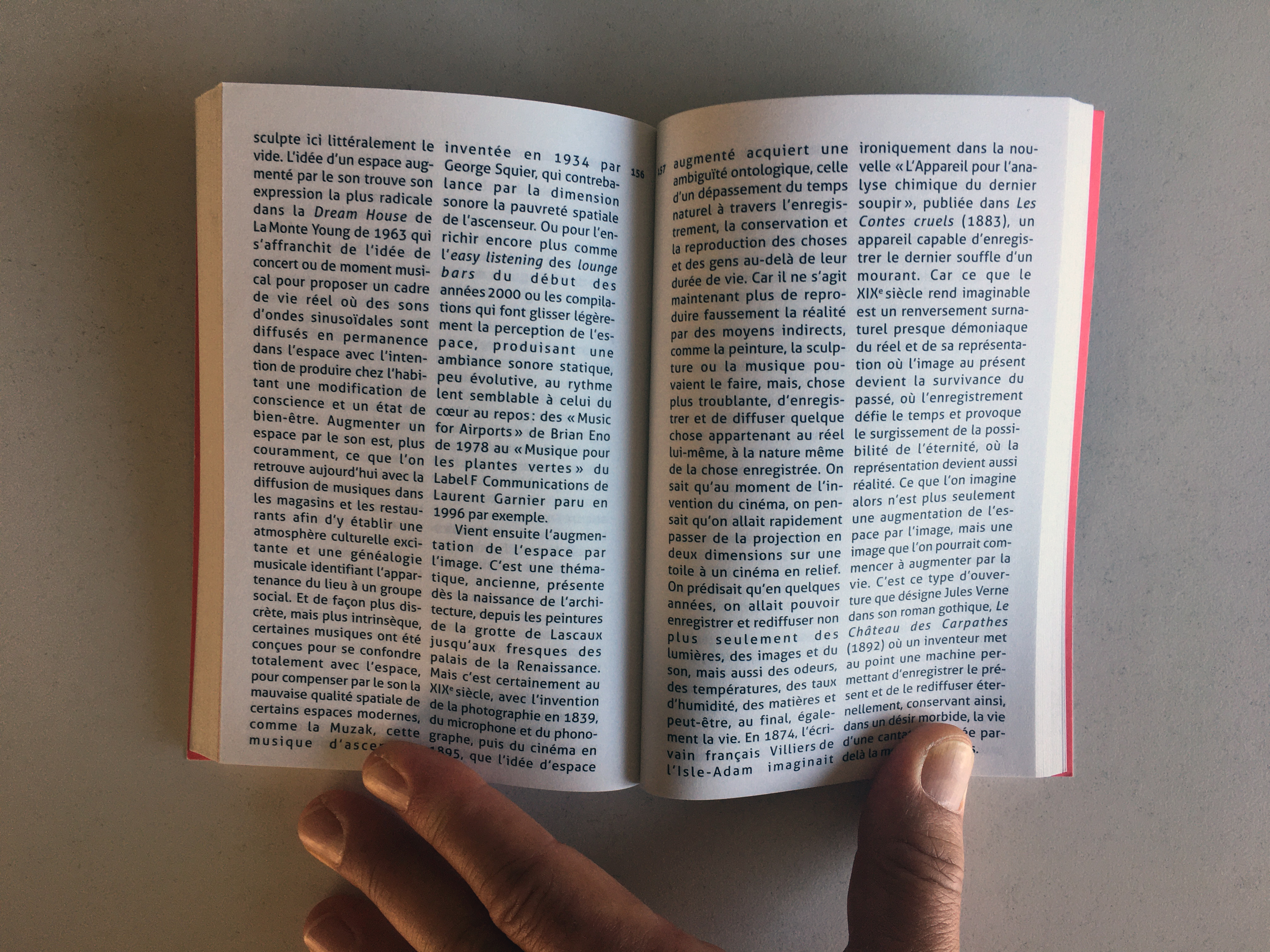

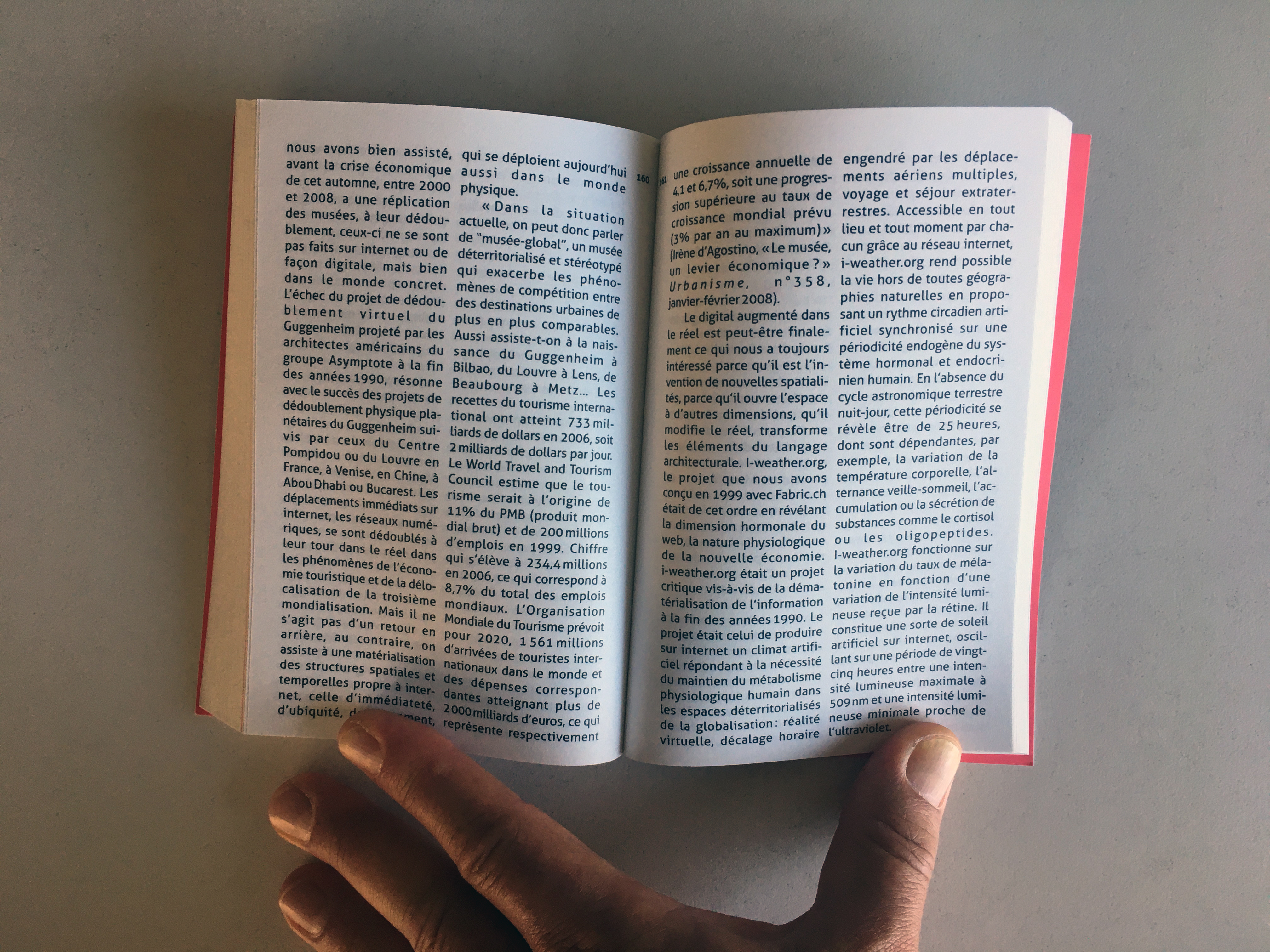

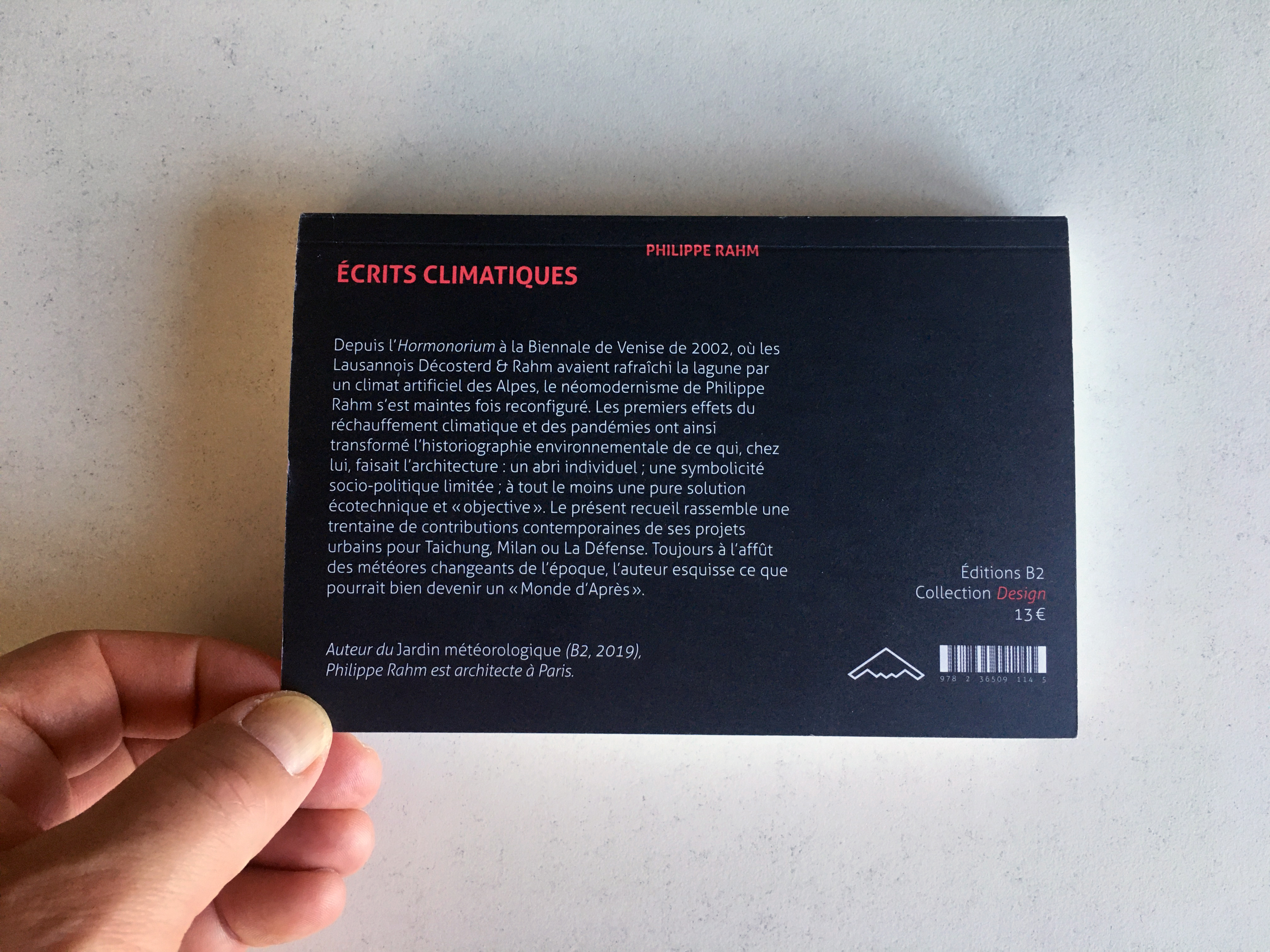


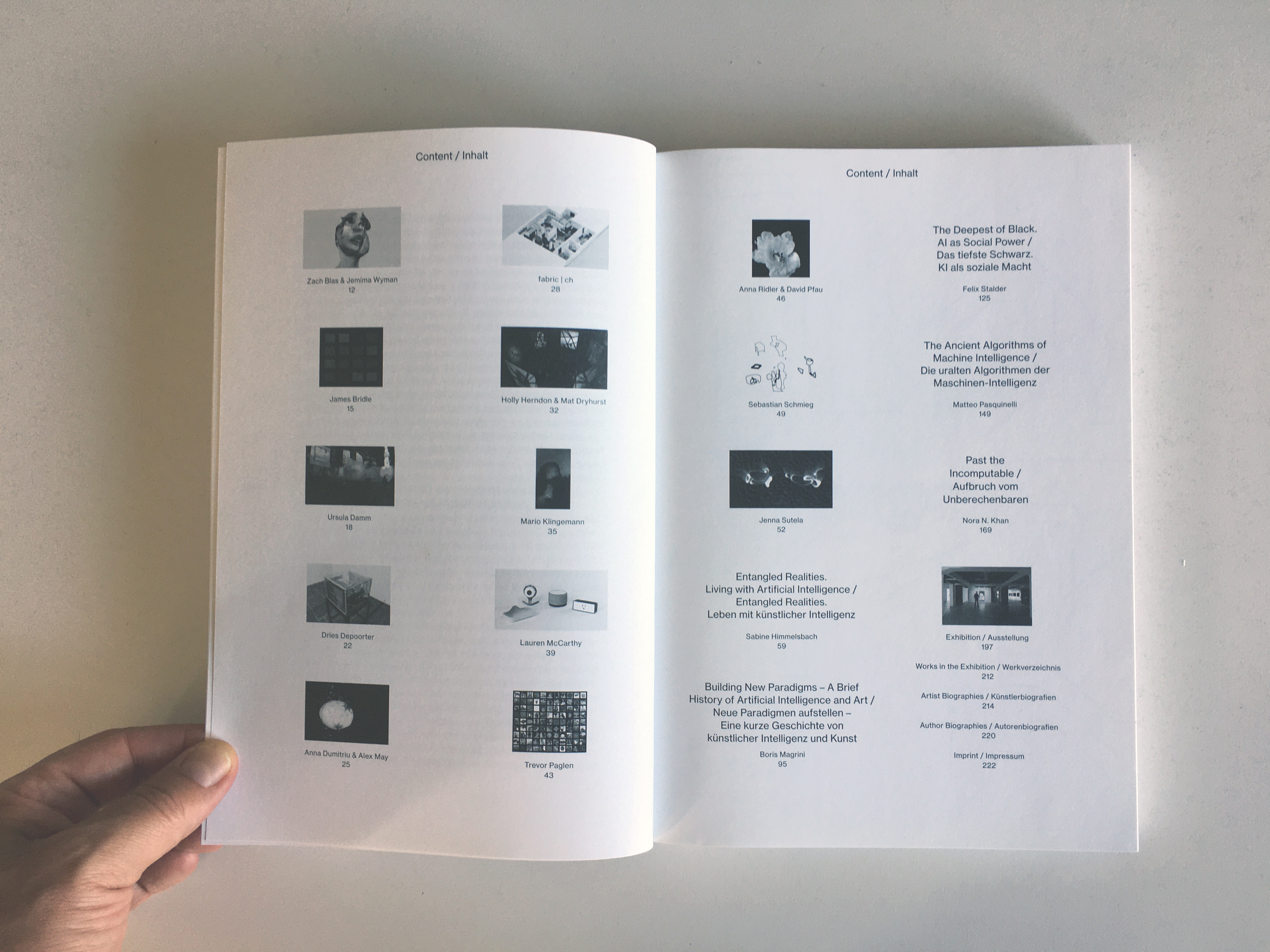
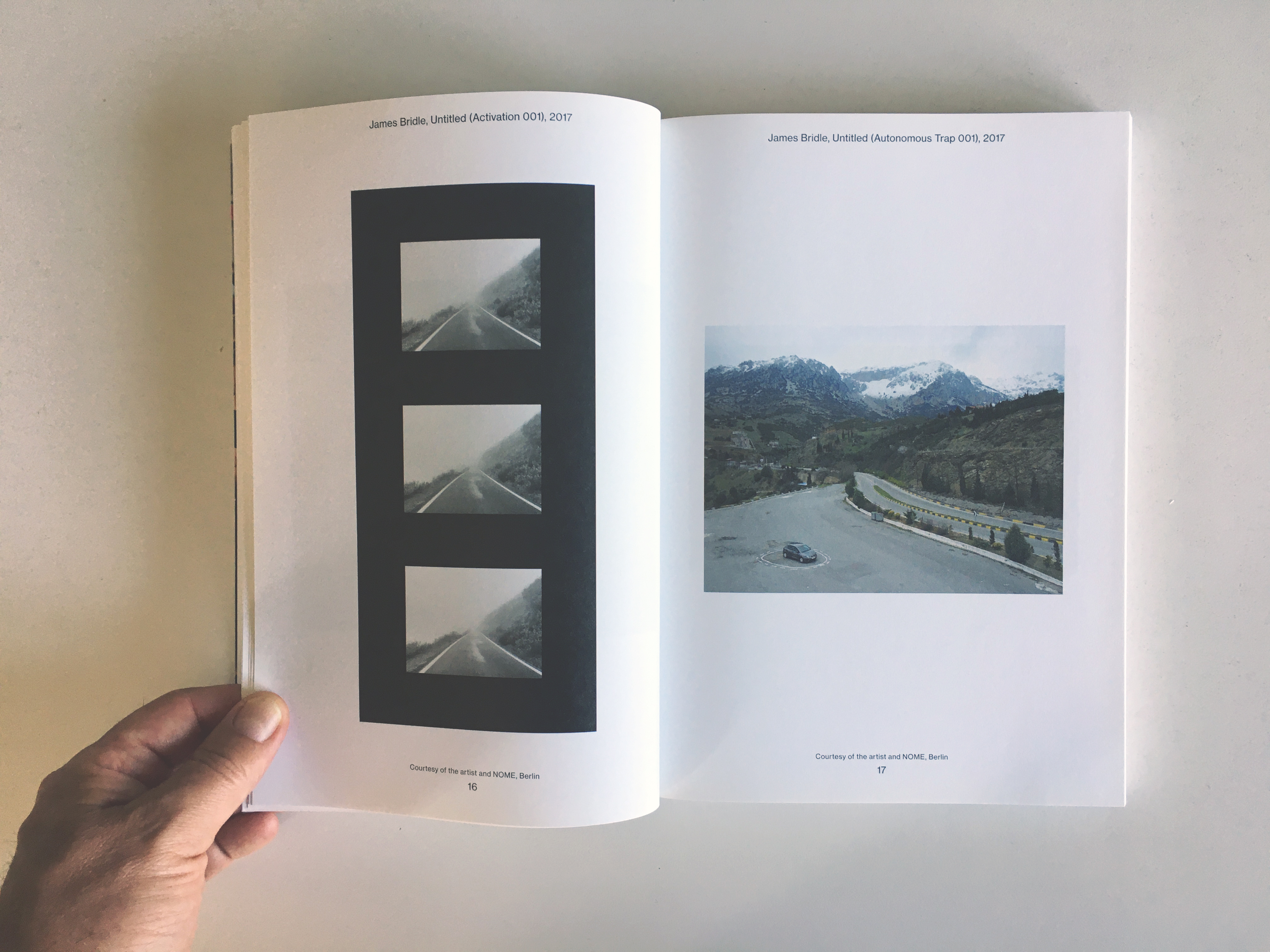
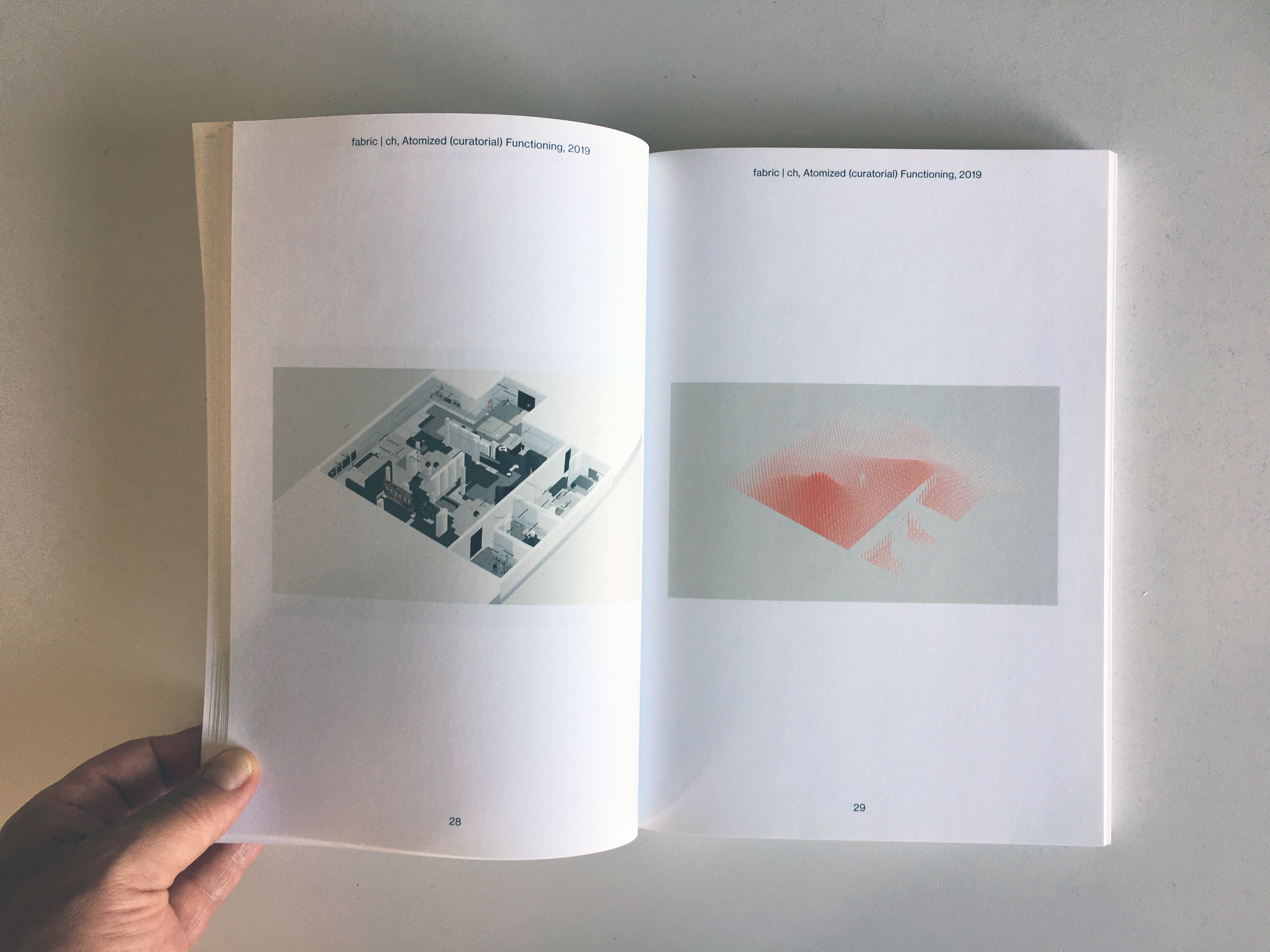
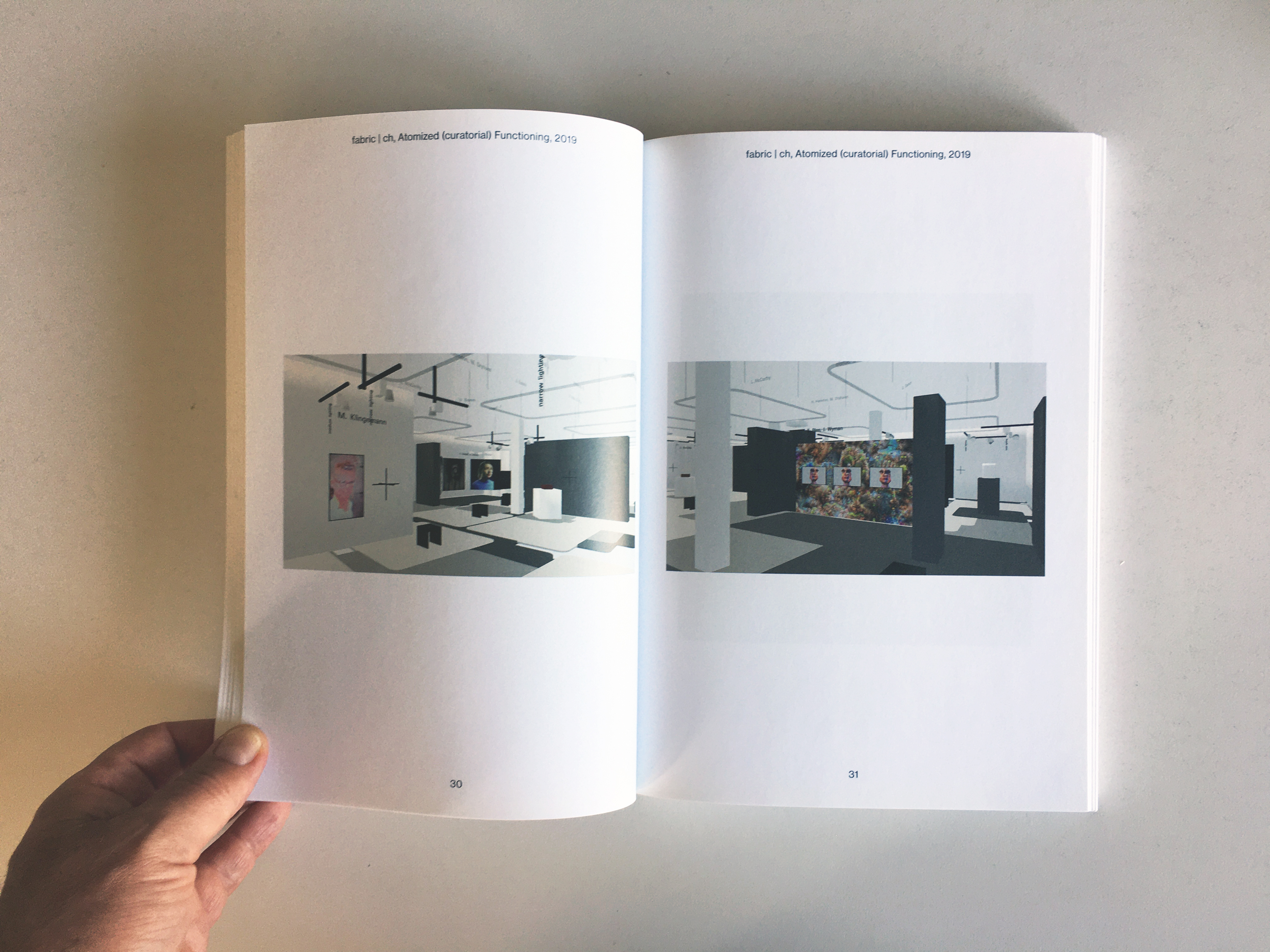




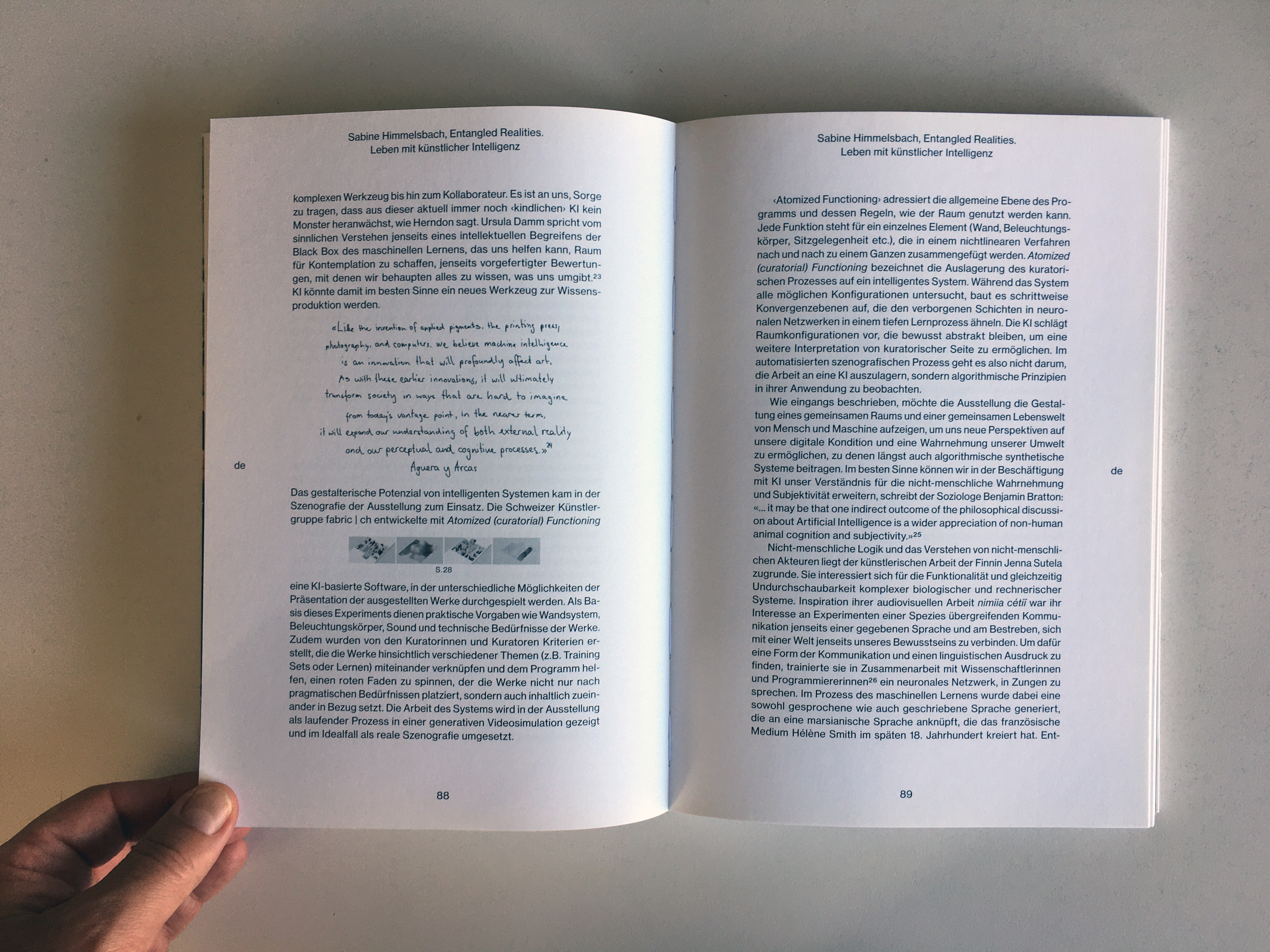

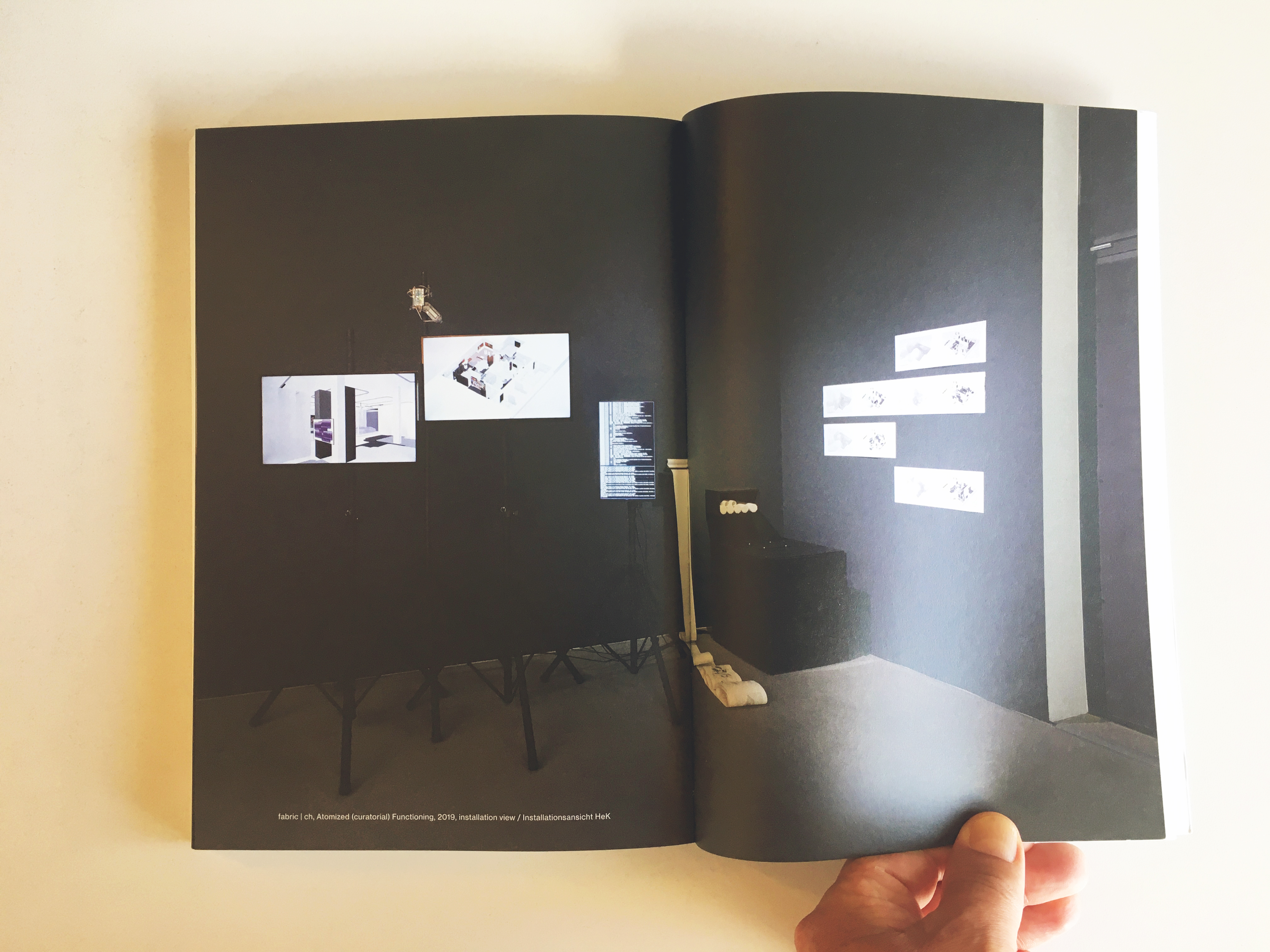
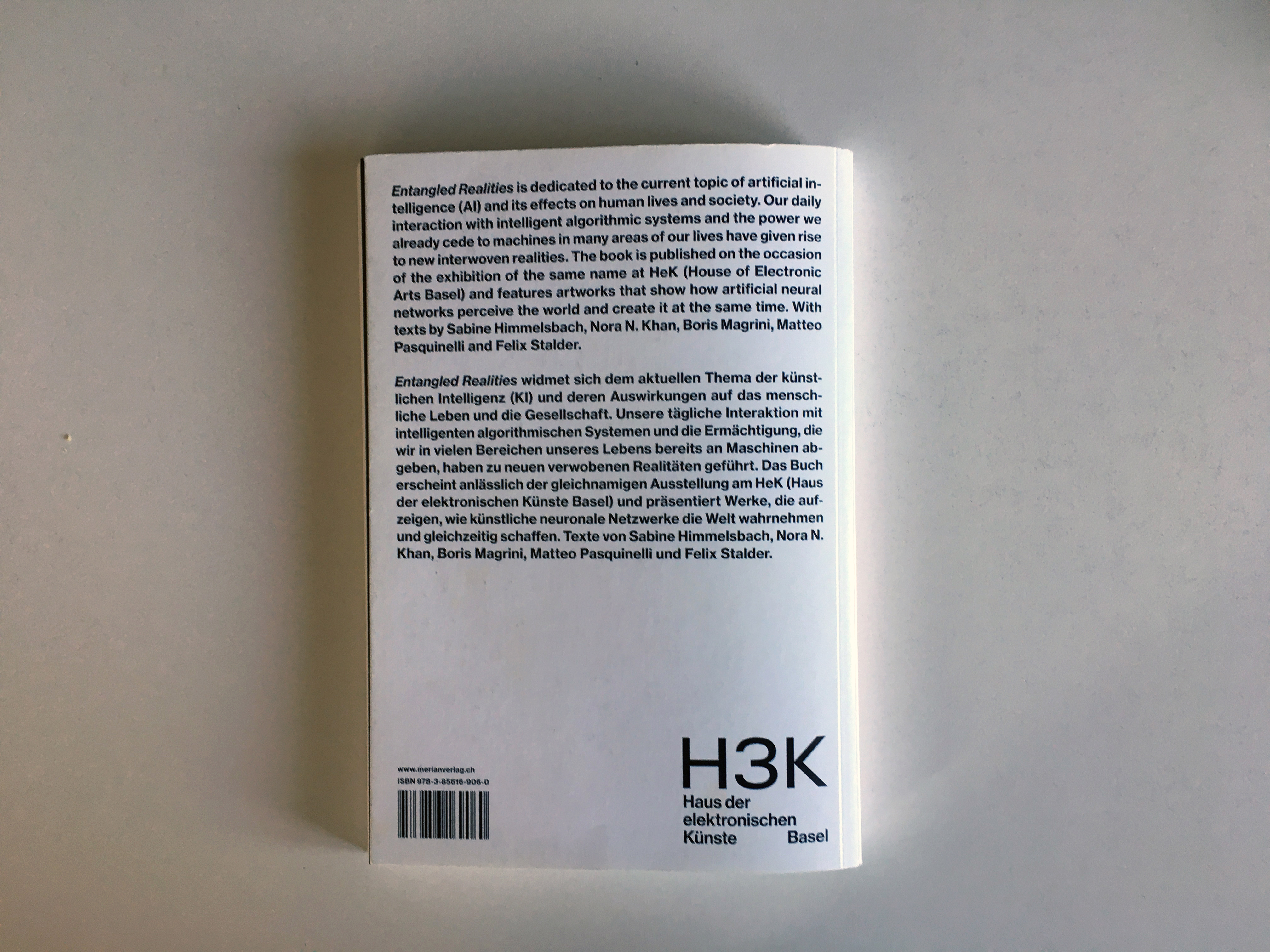


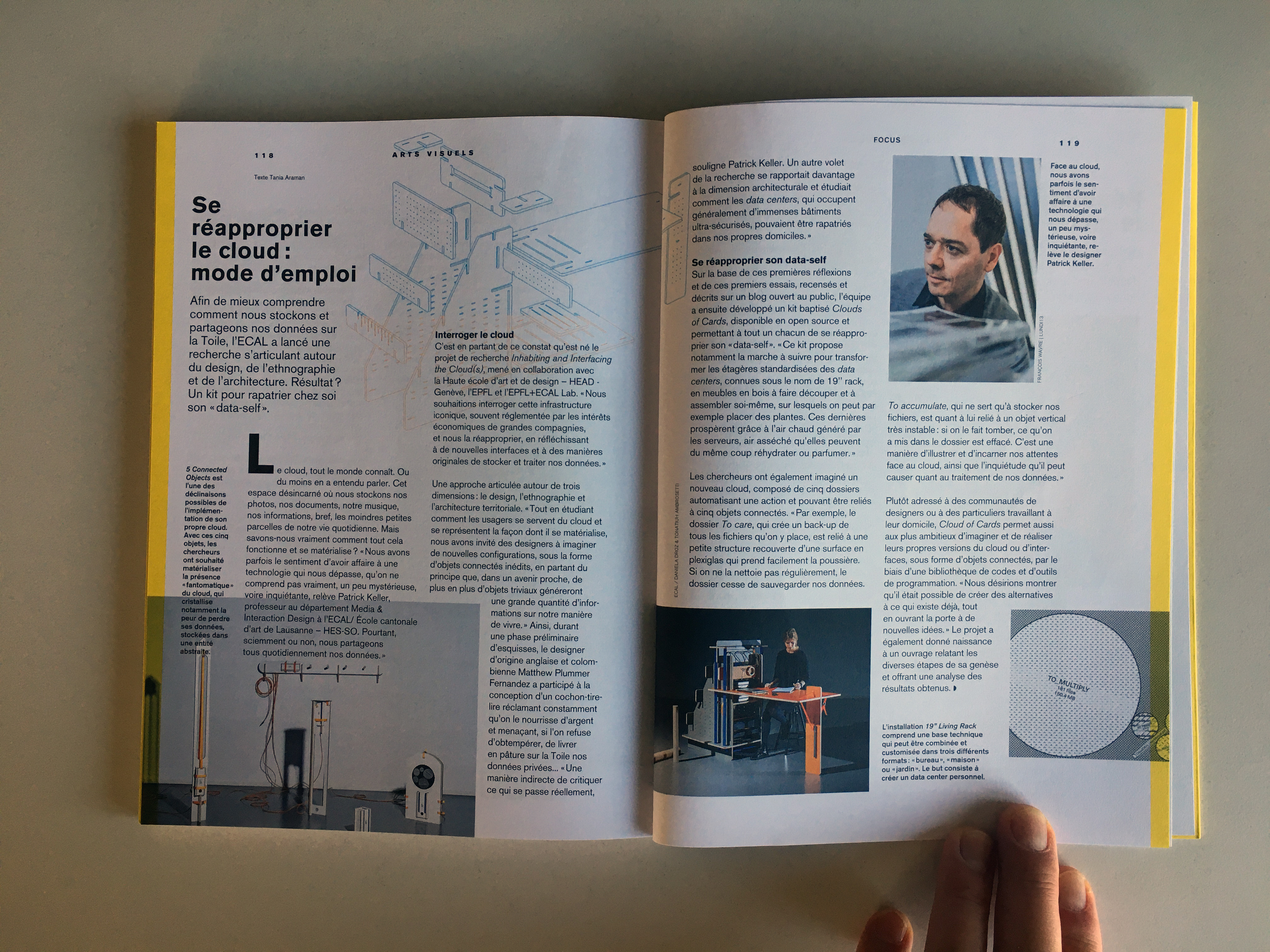
.jpg)
